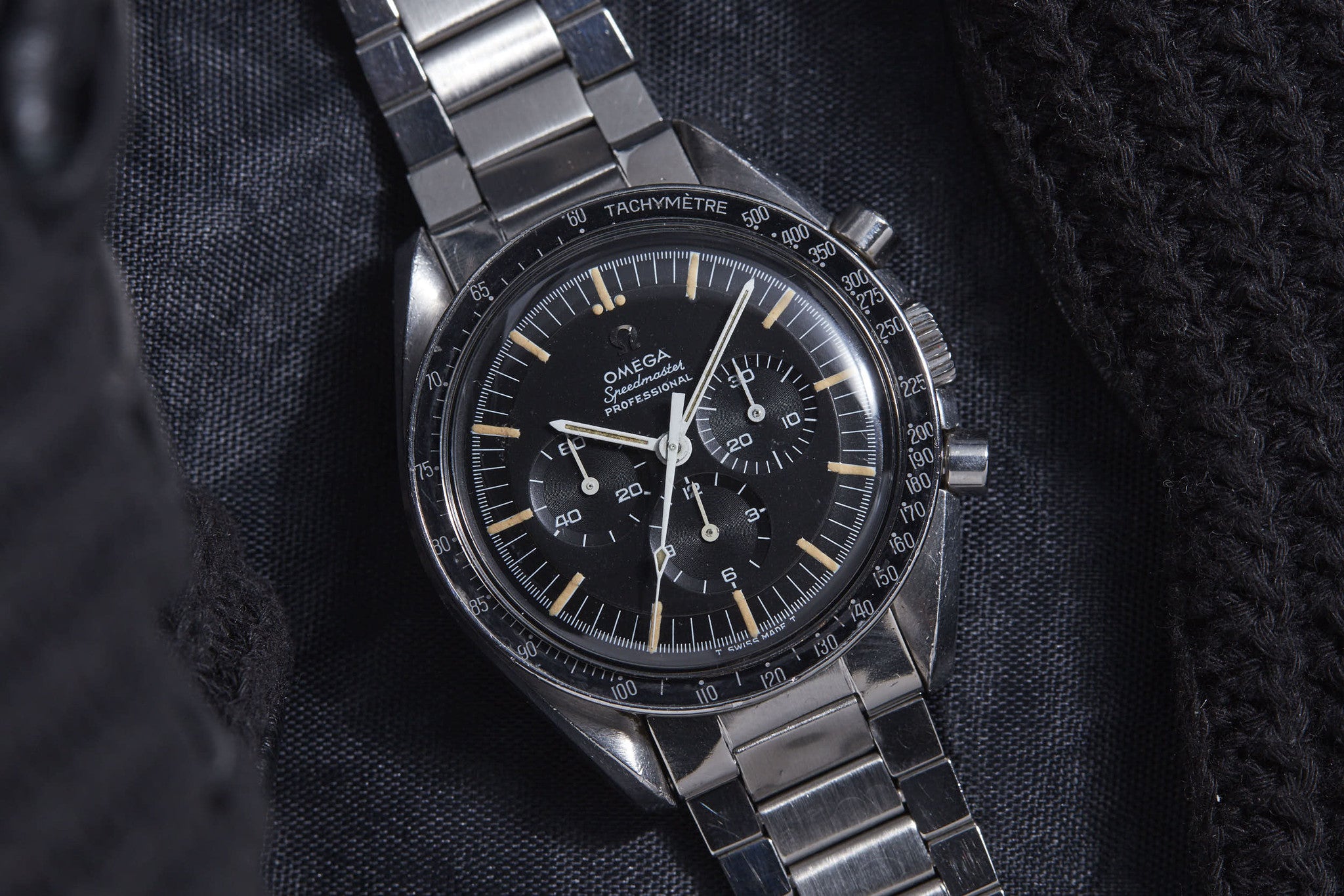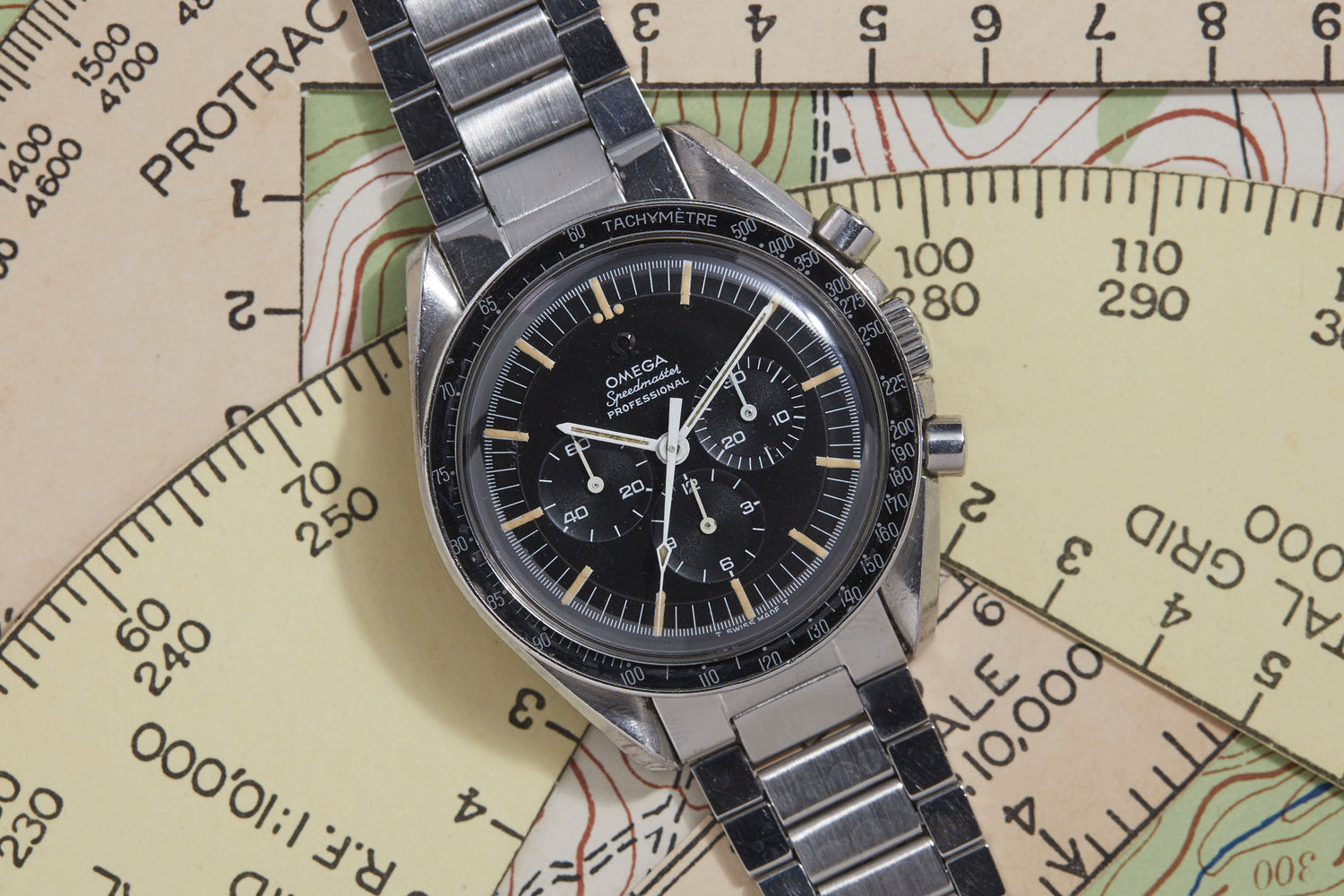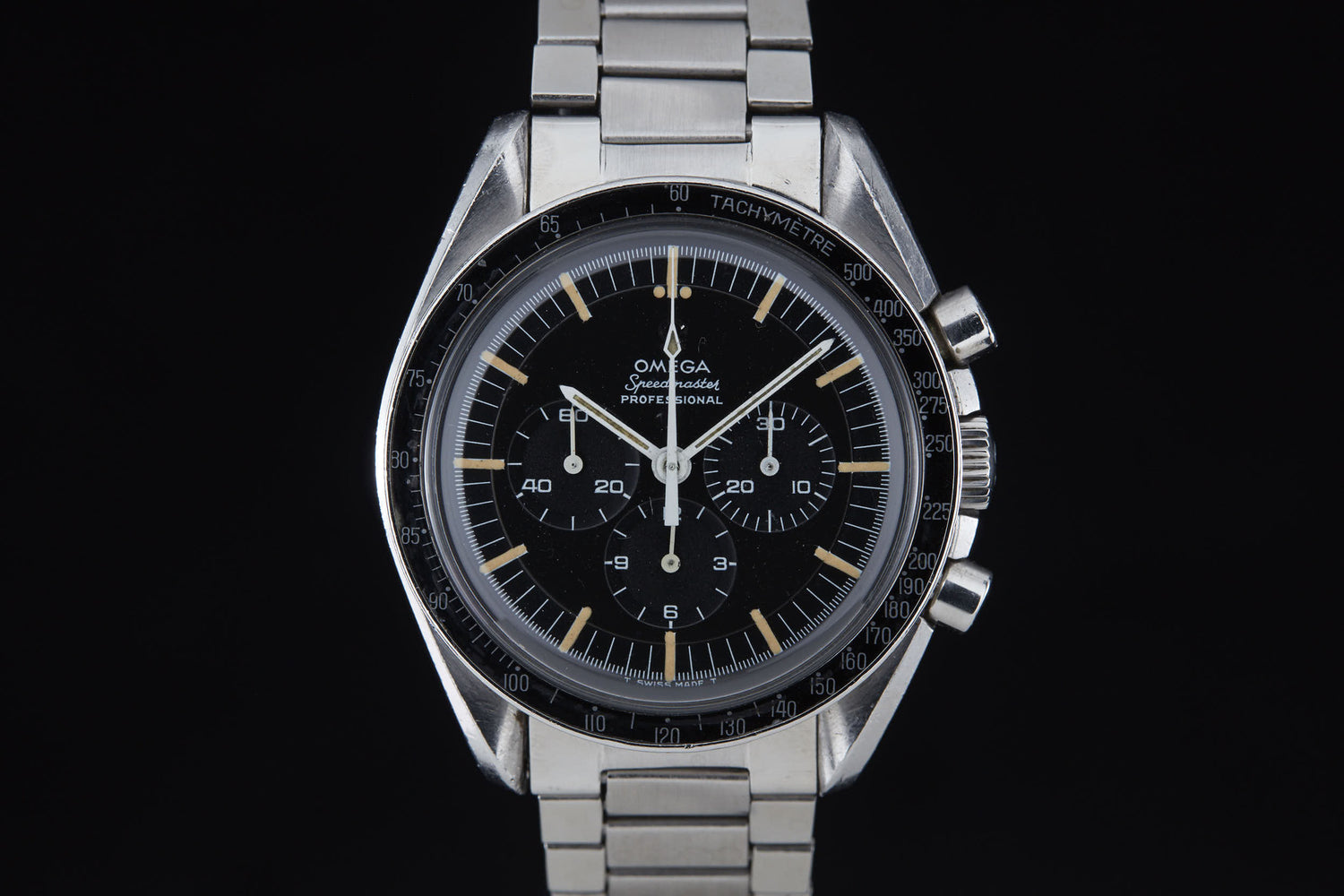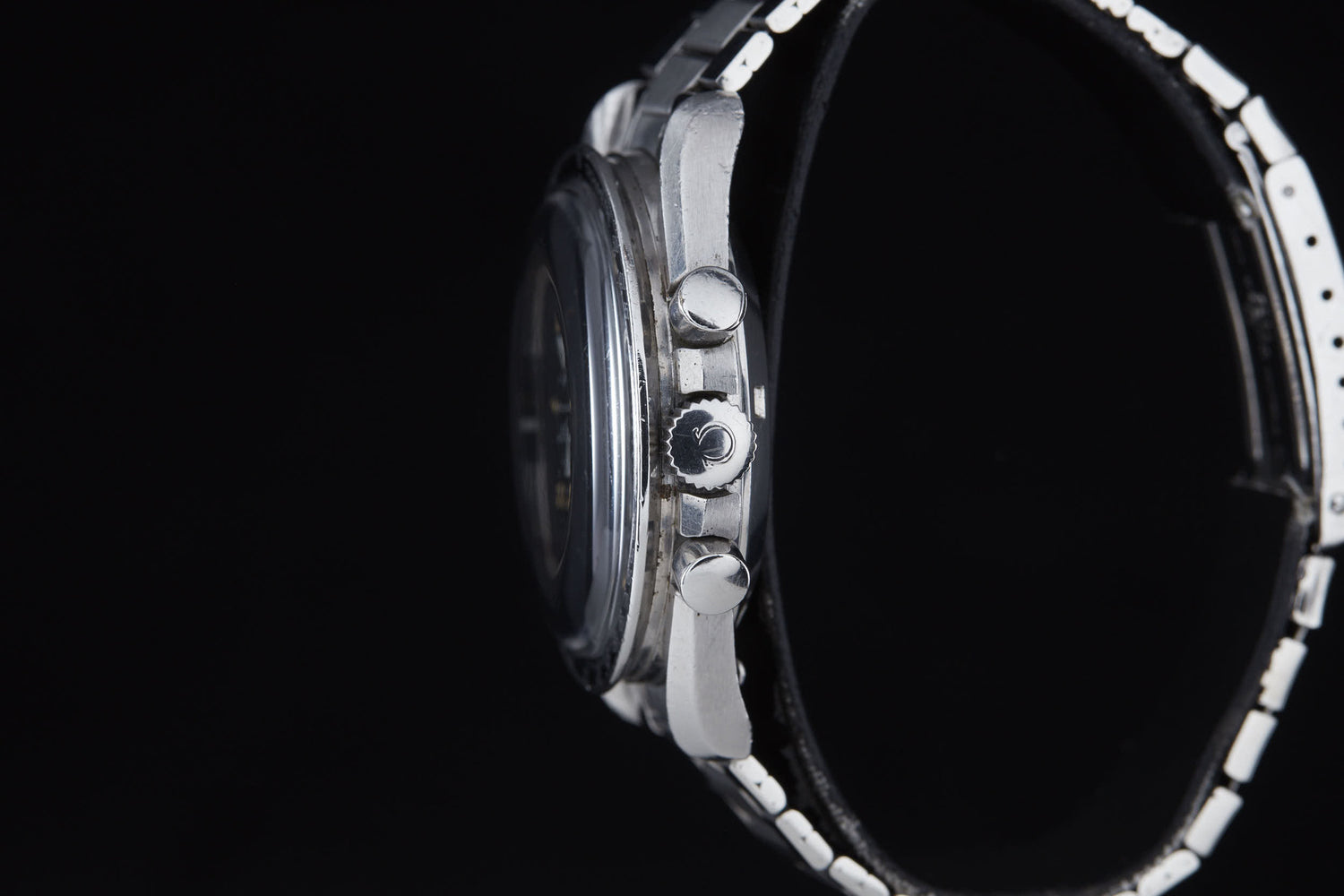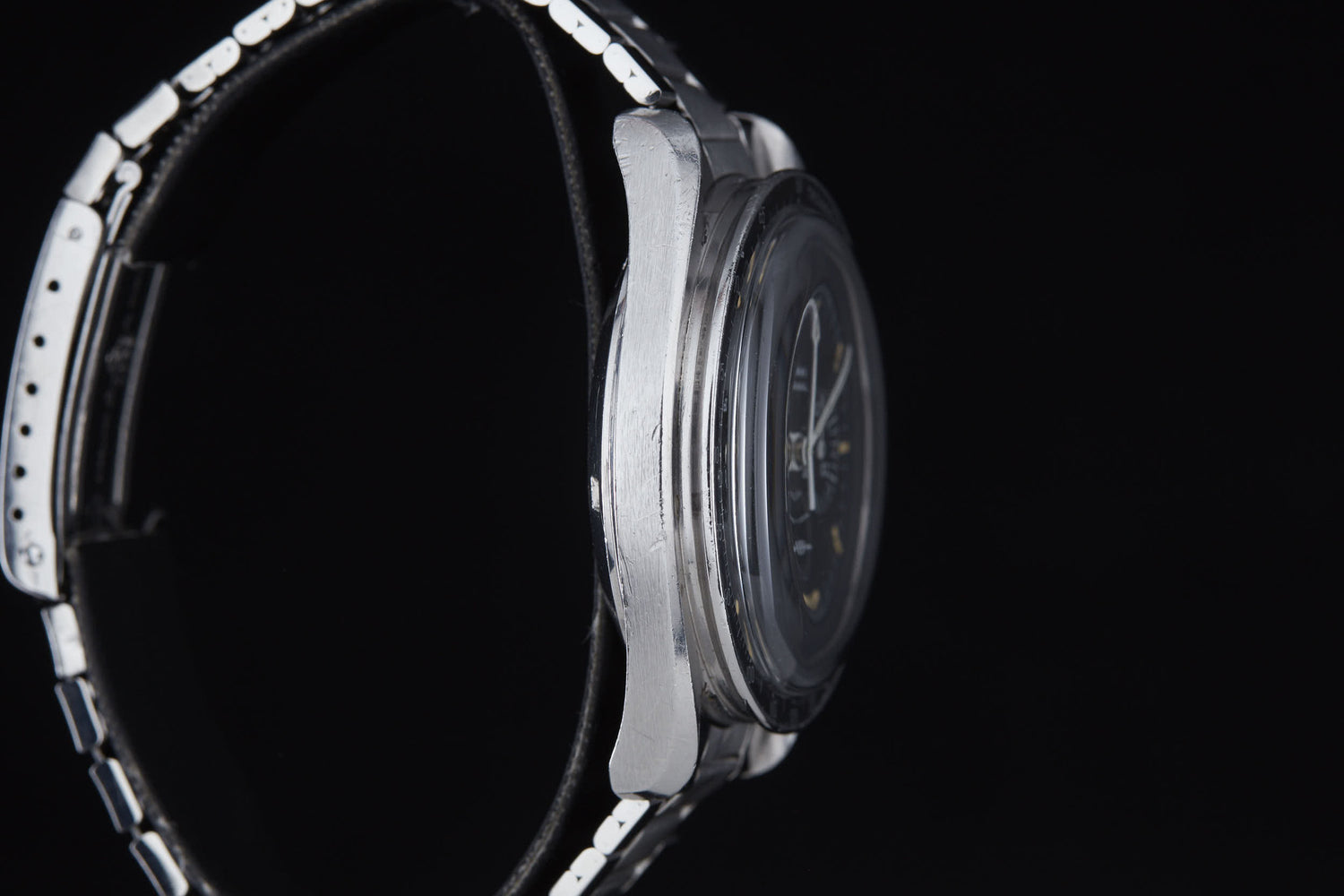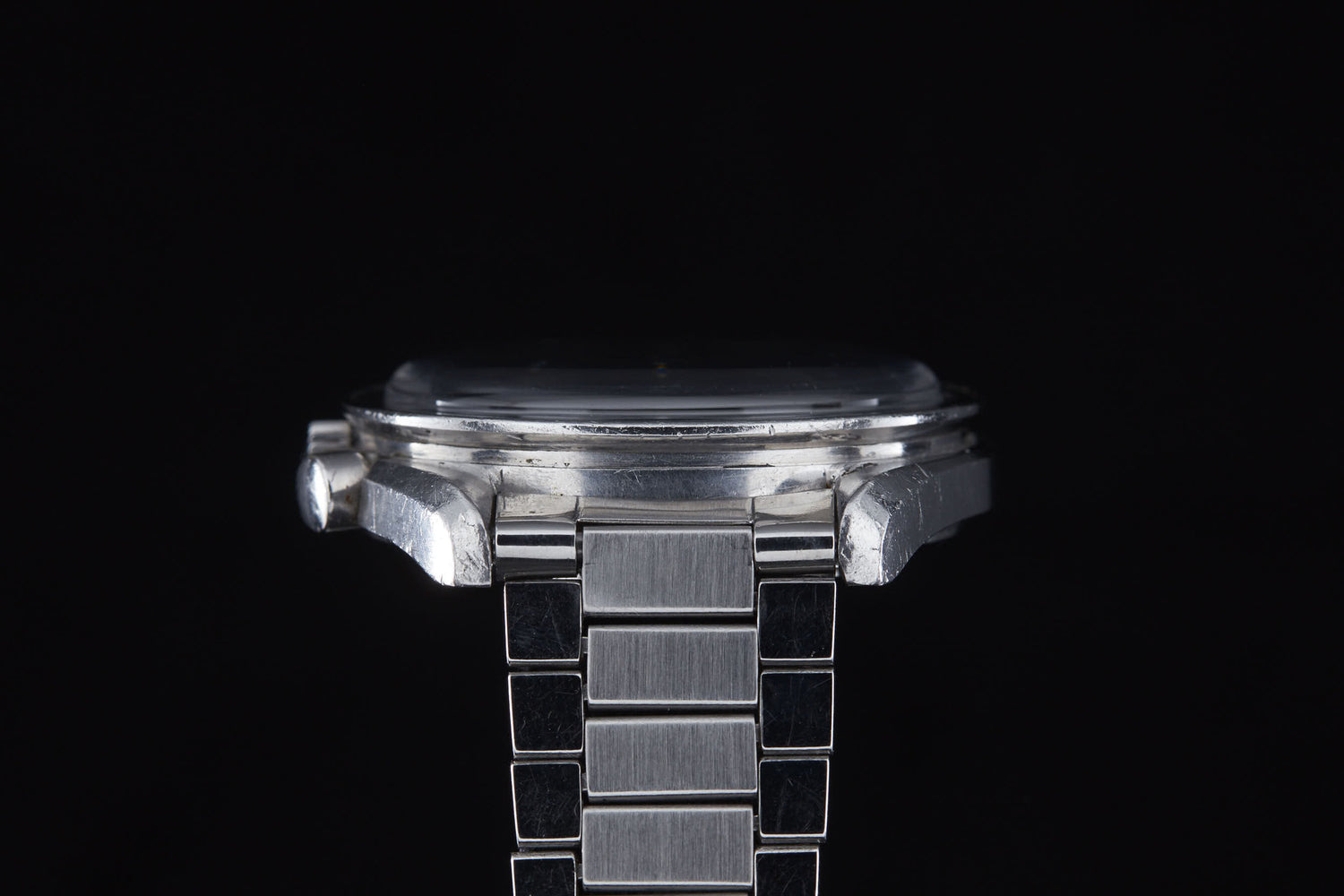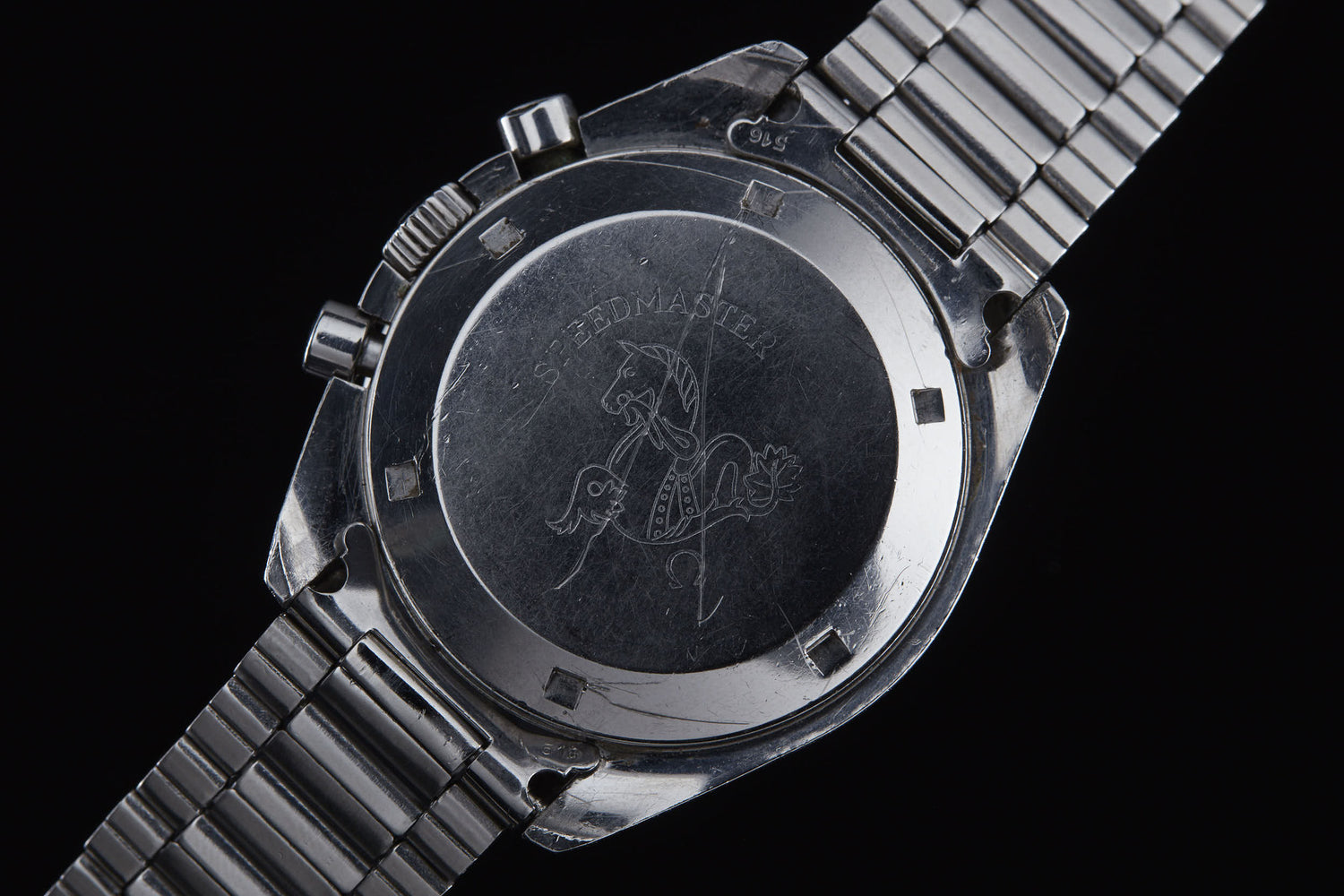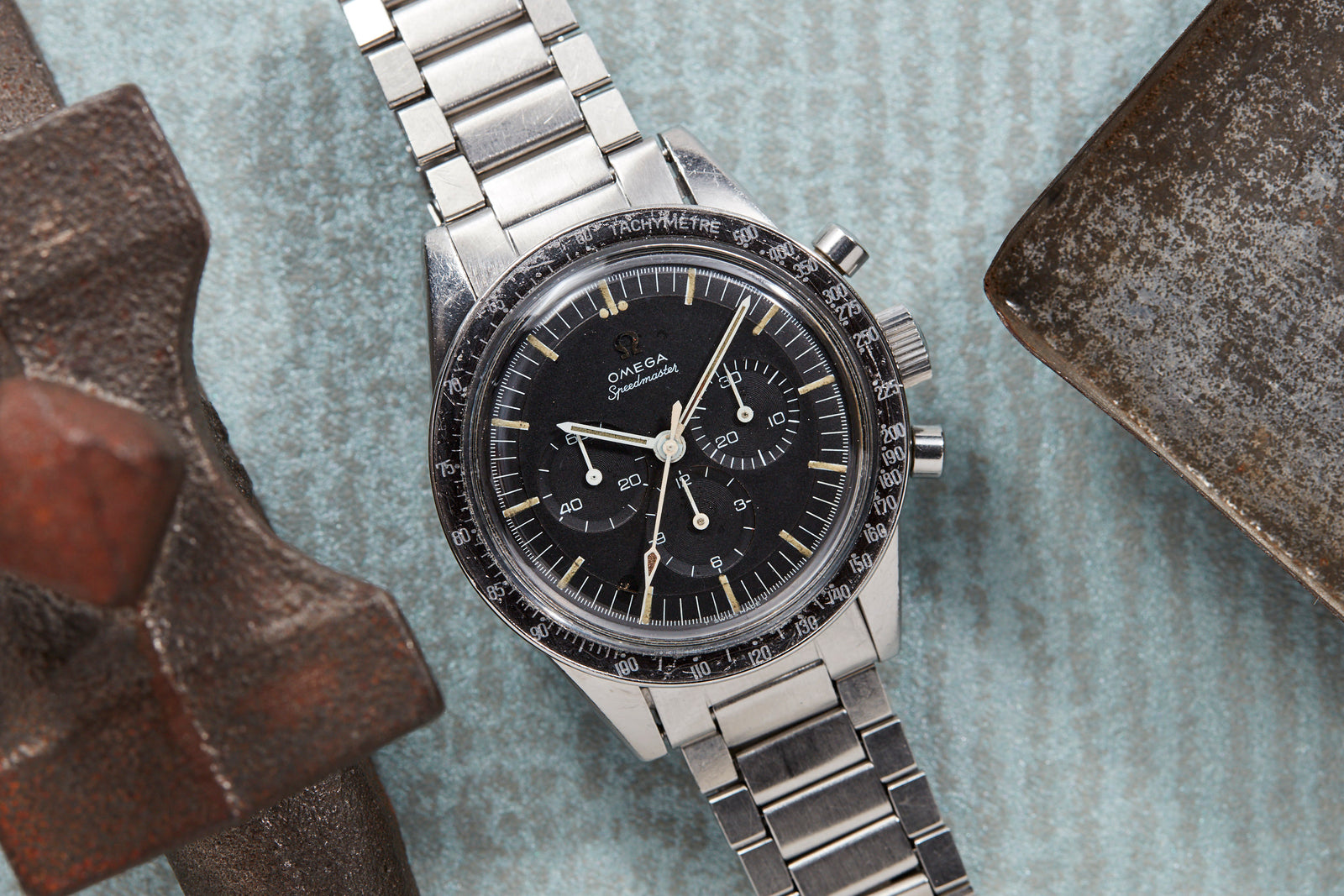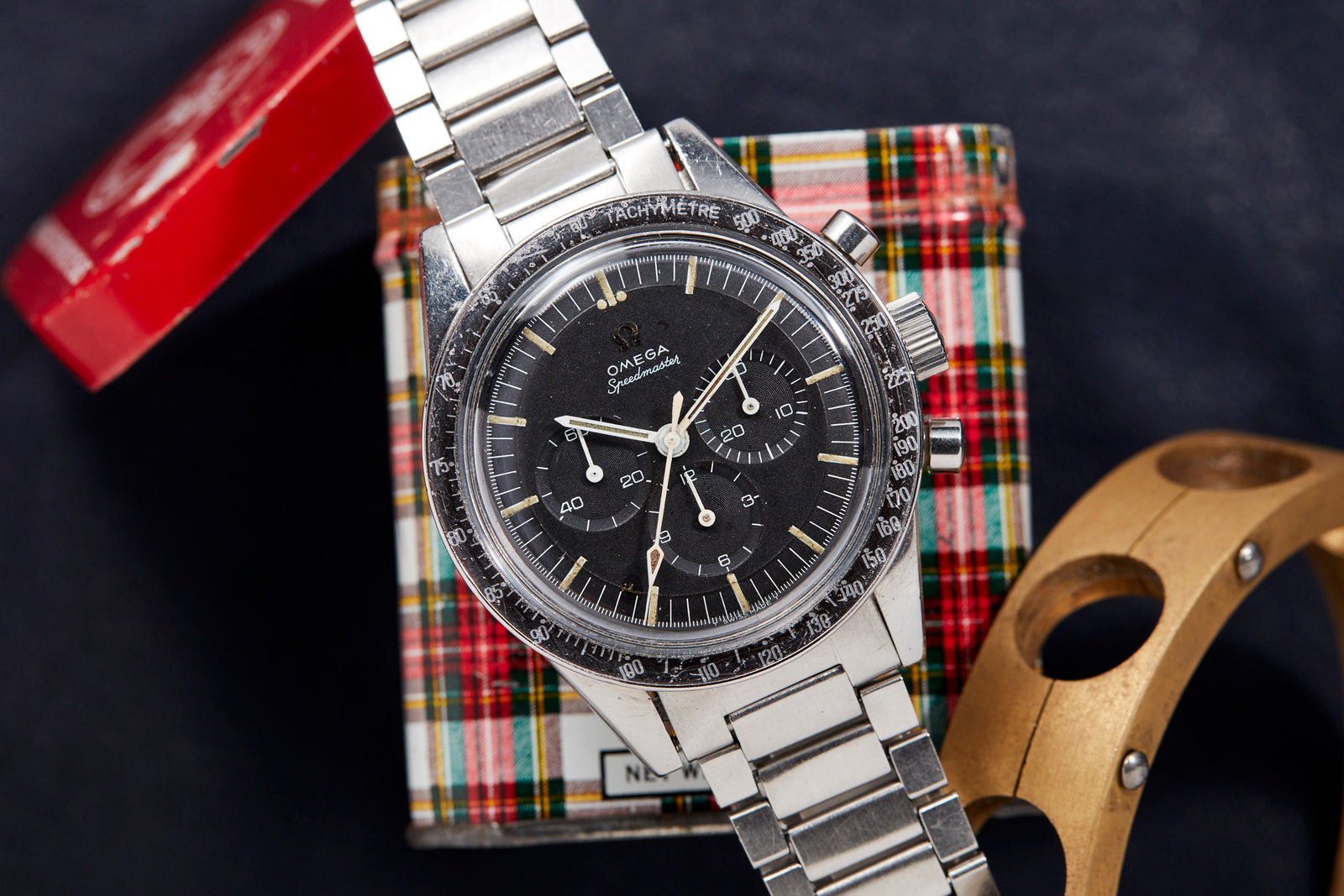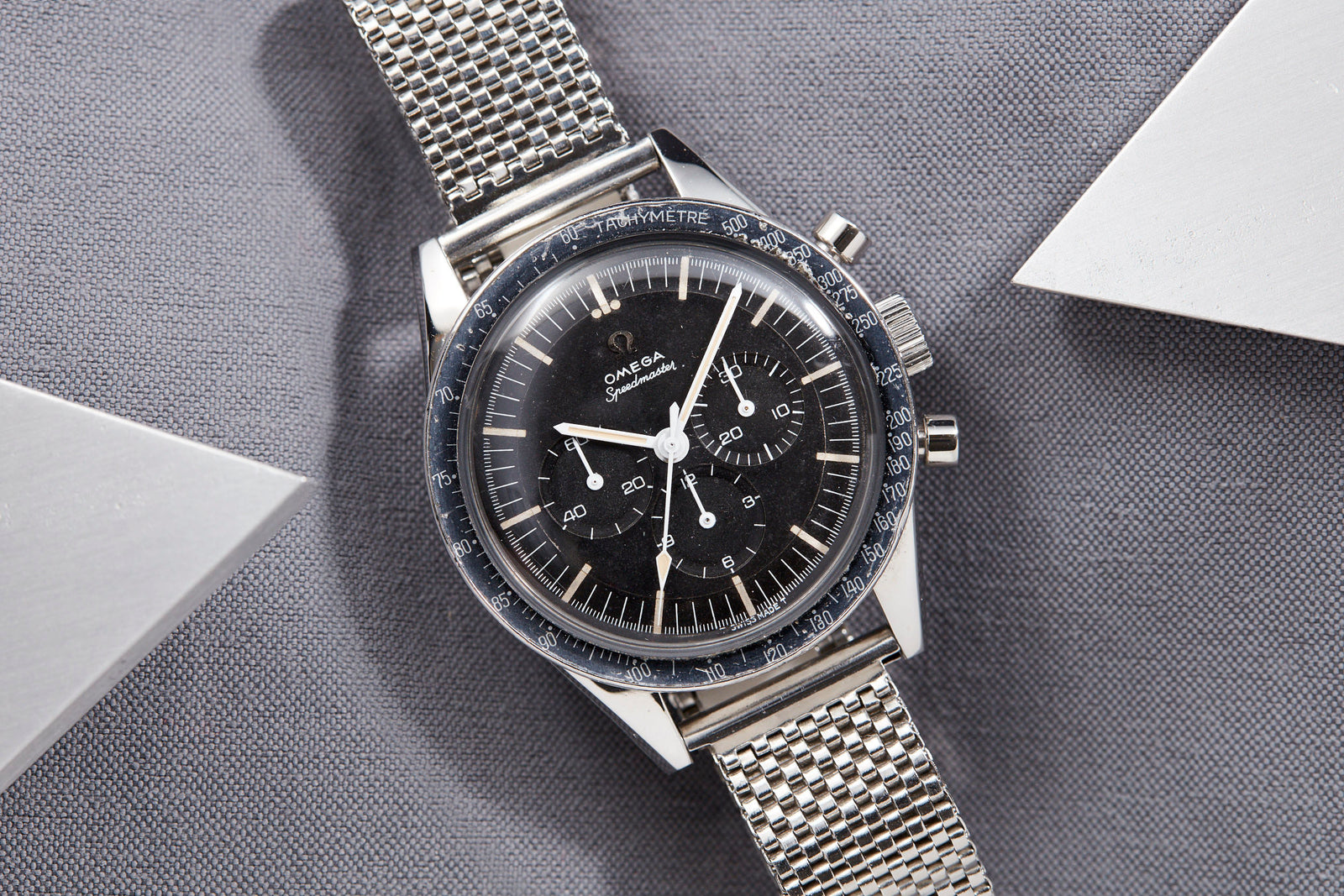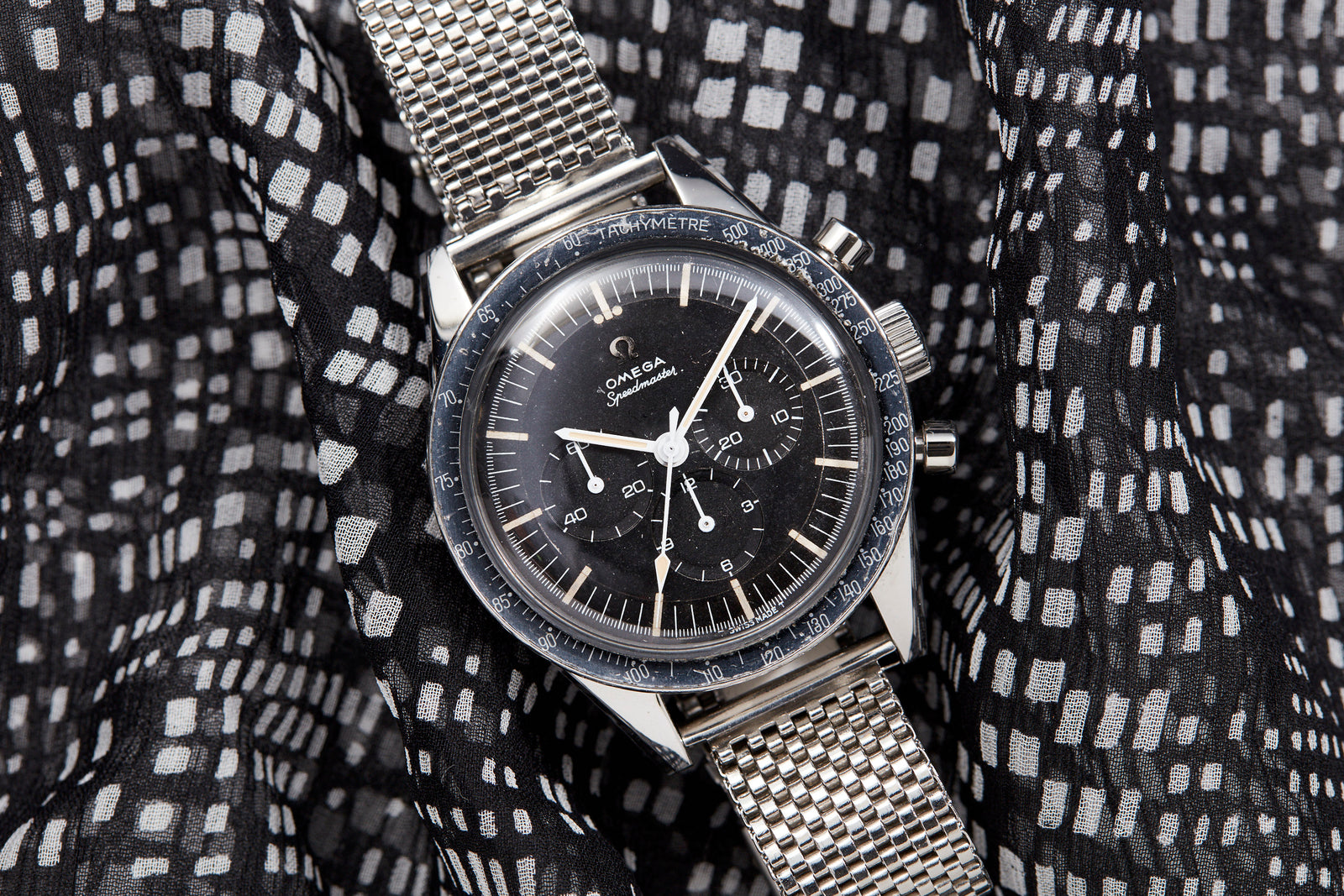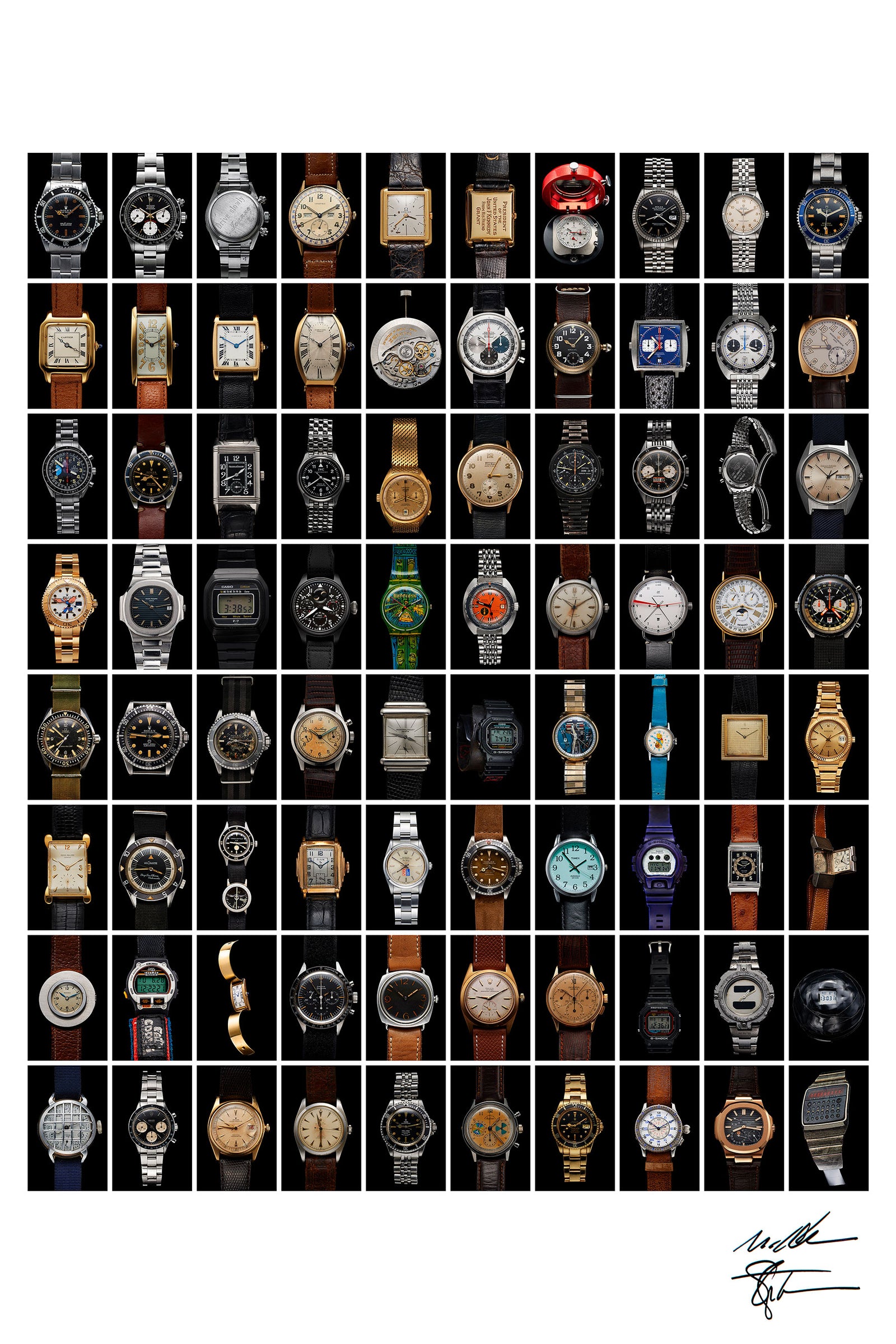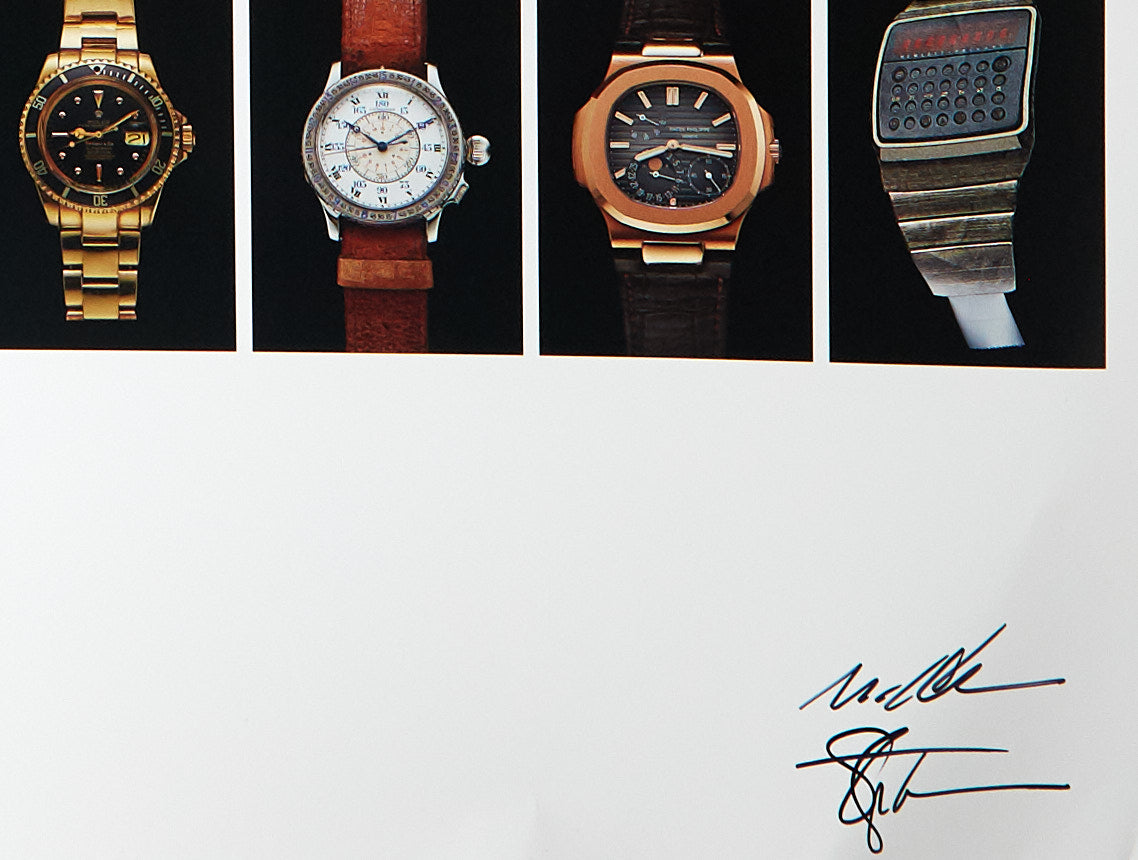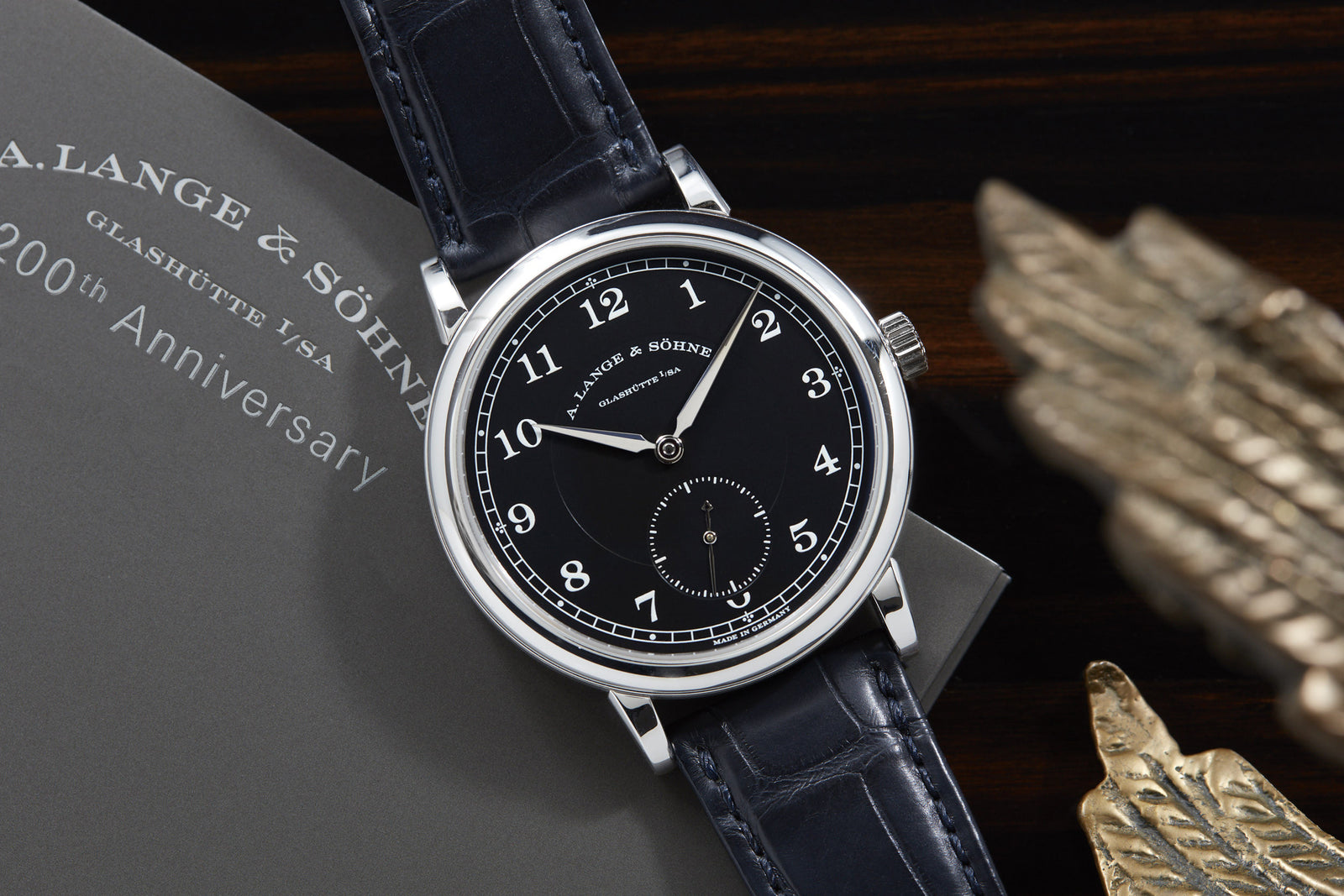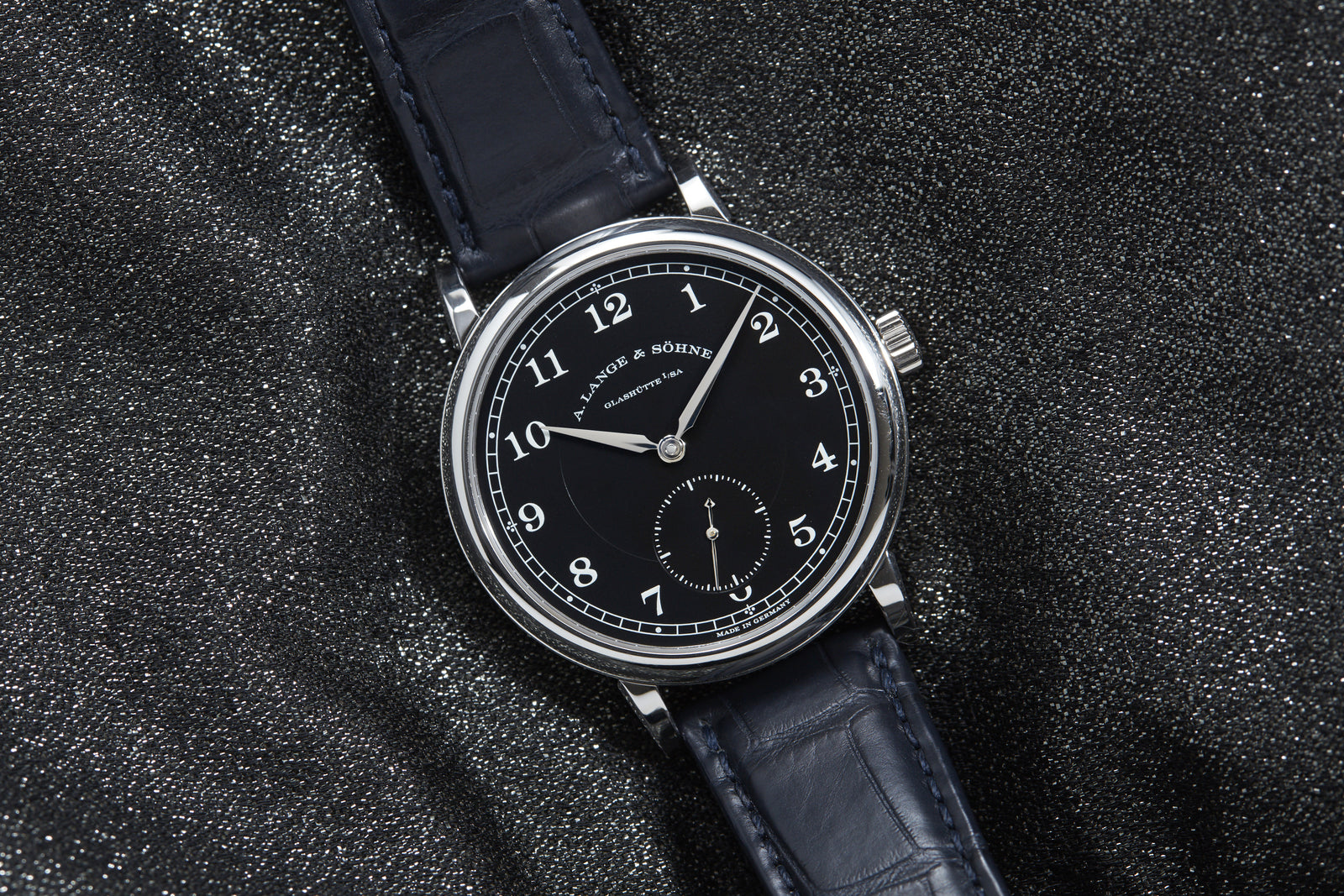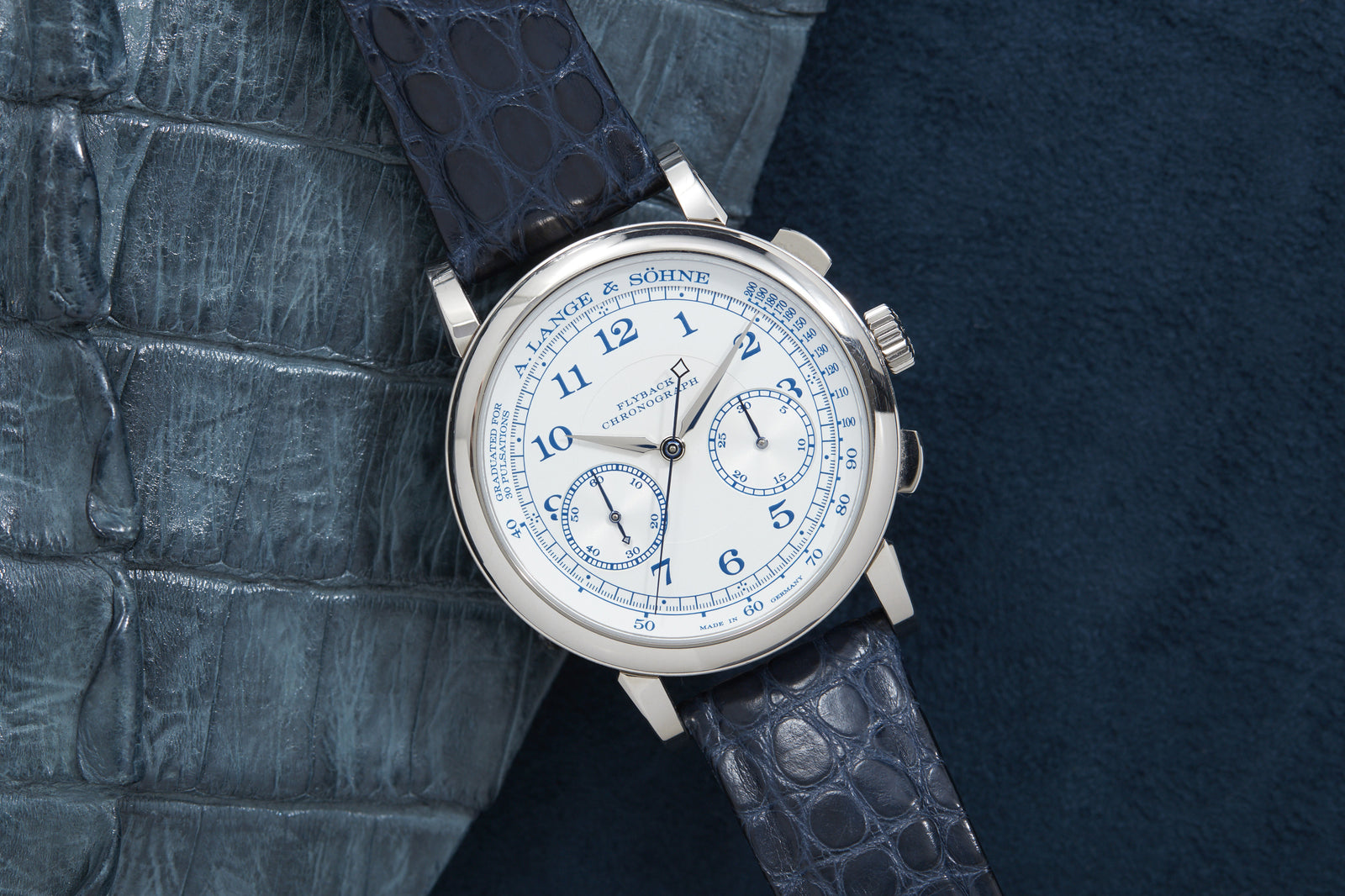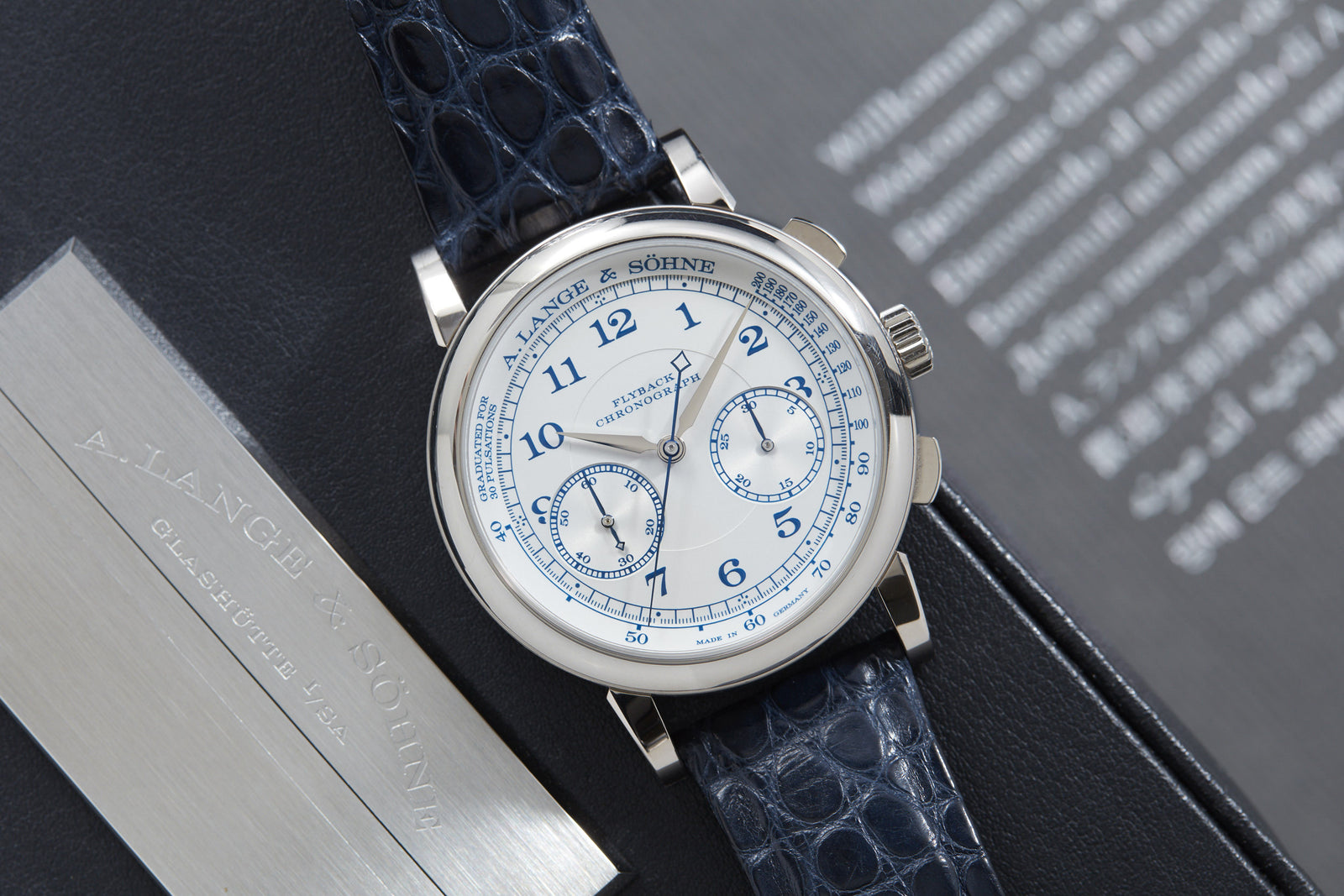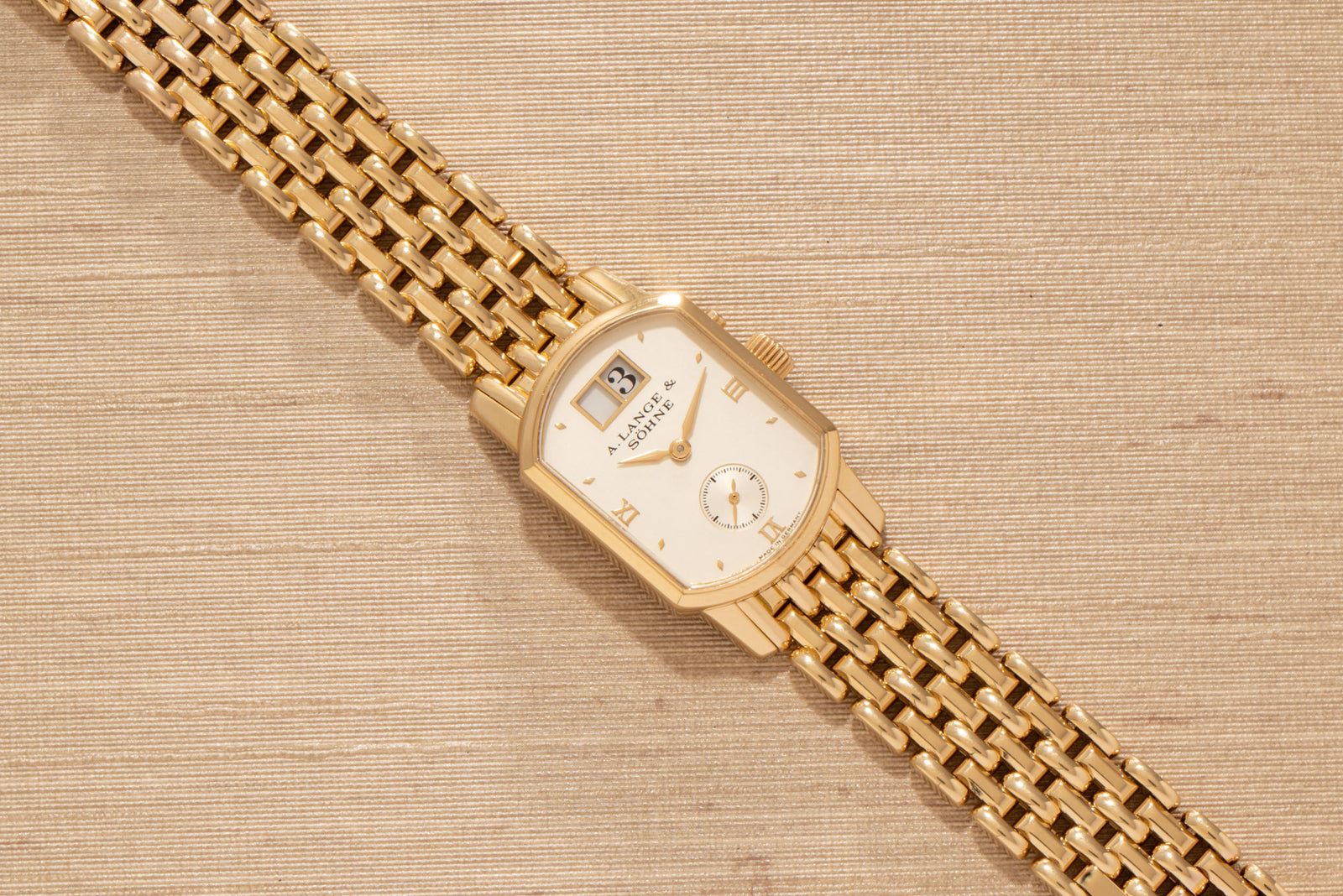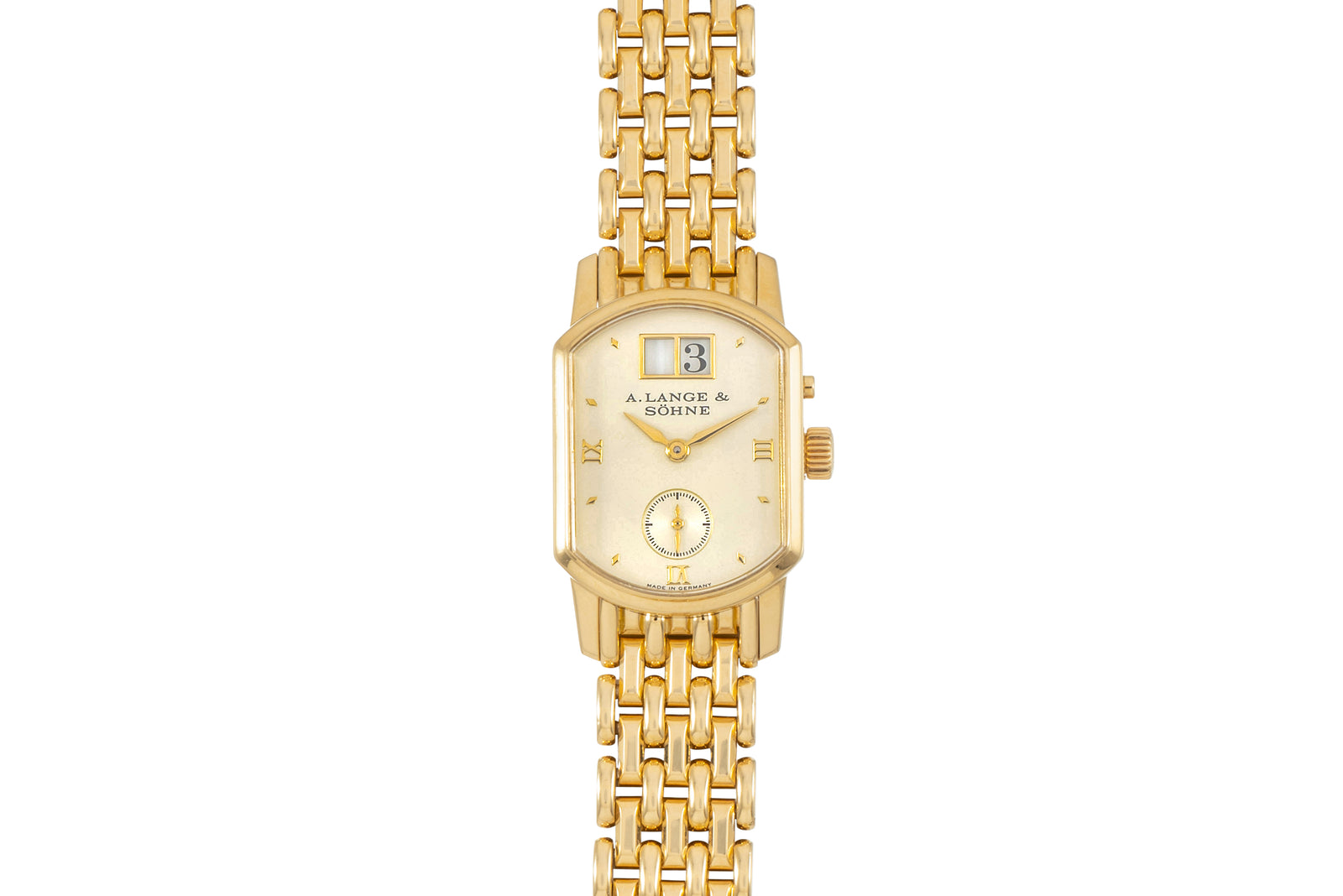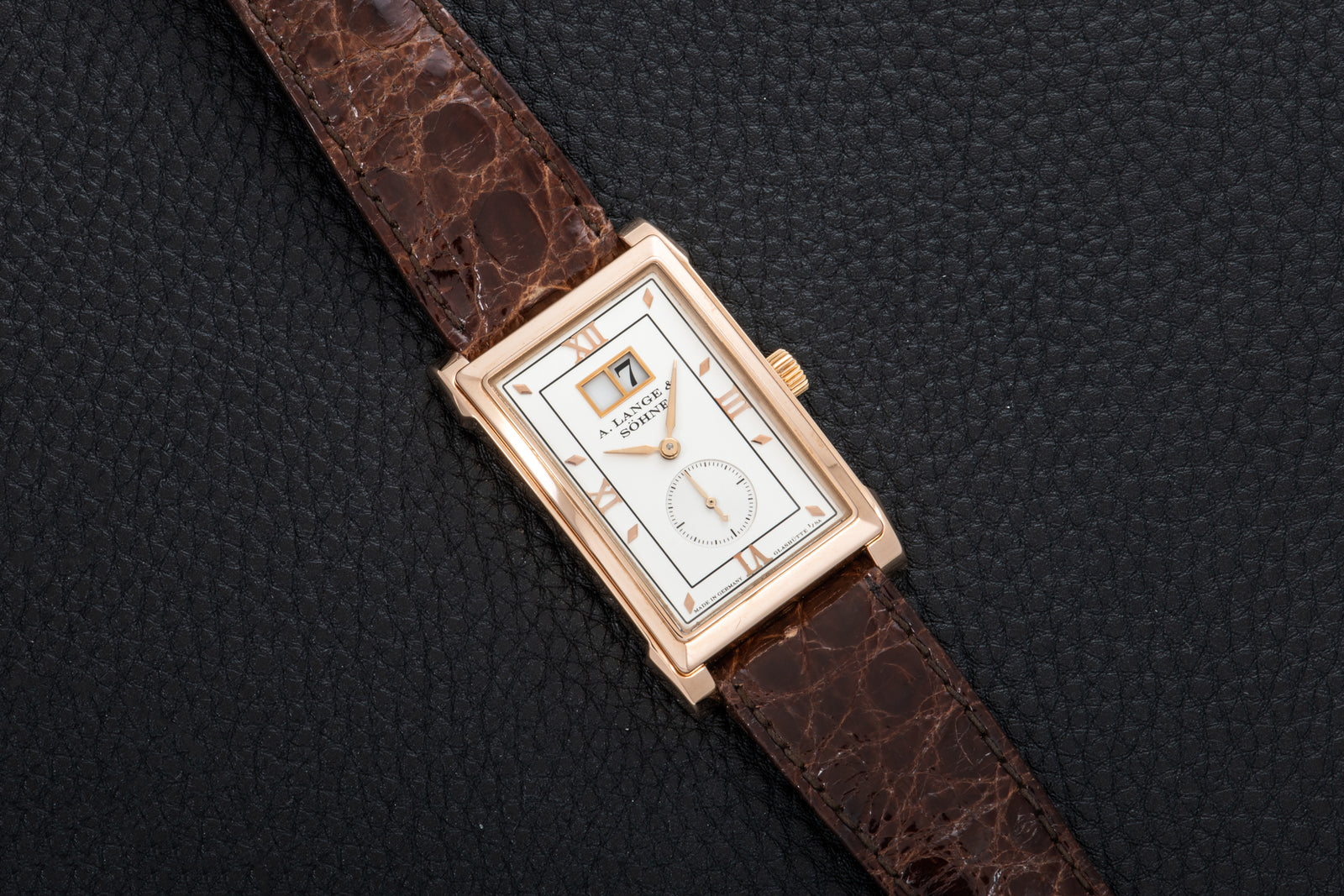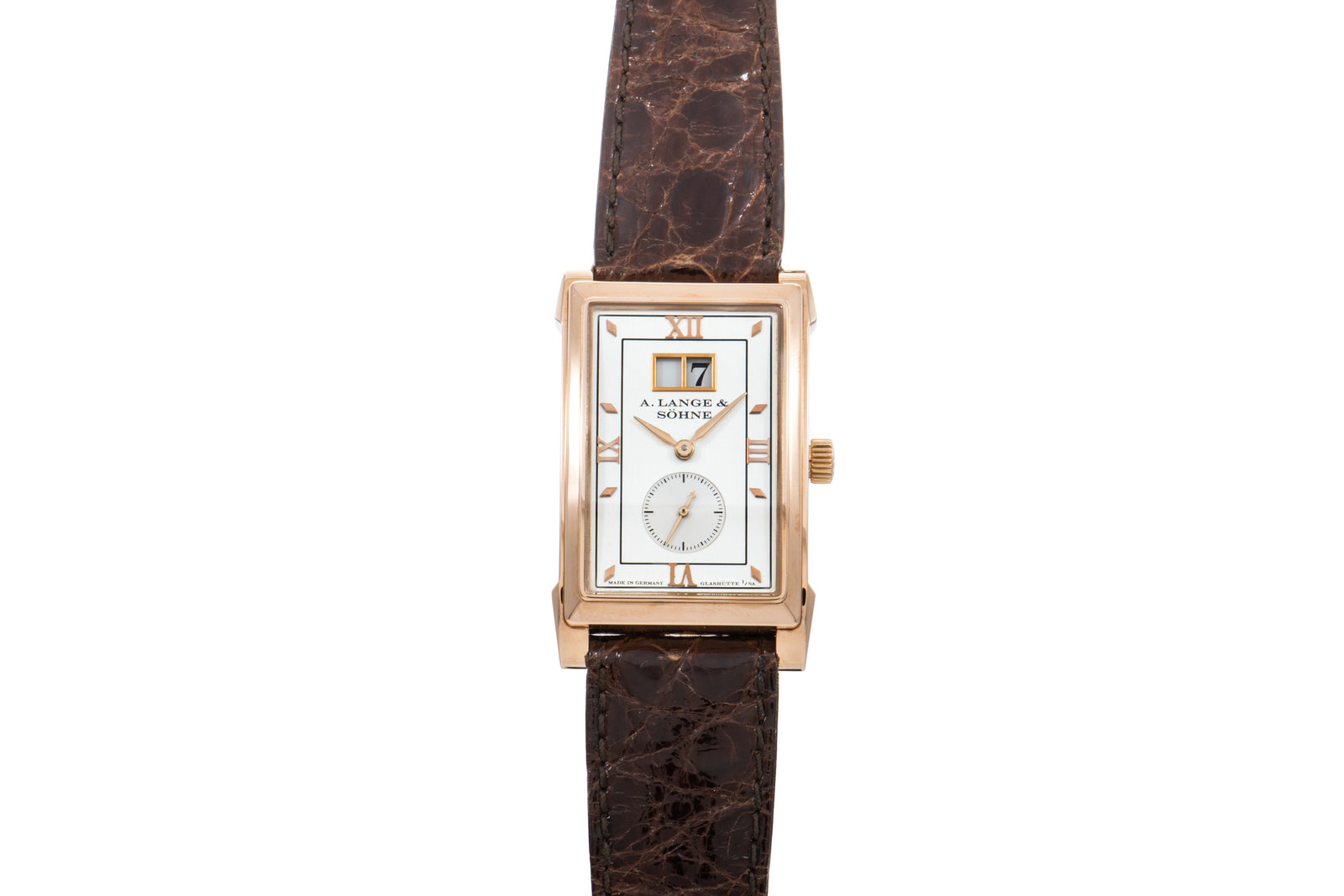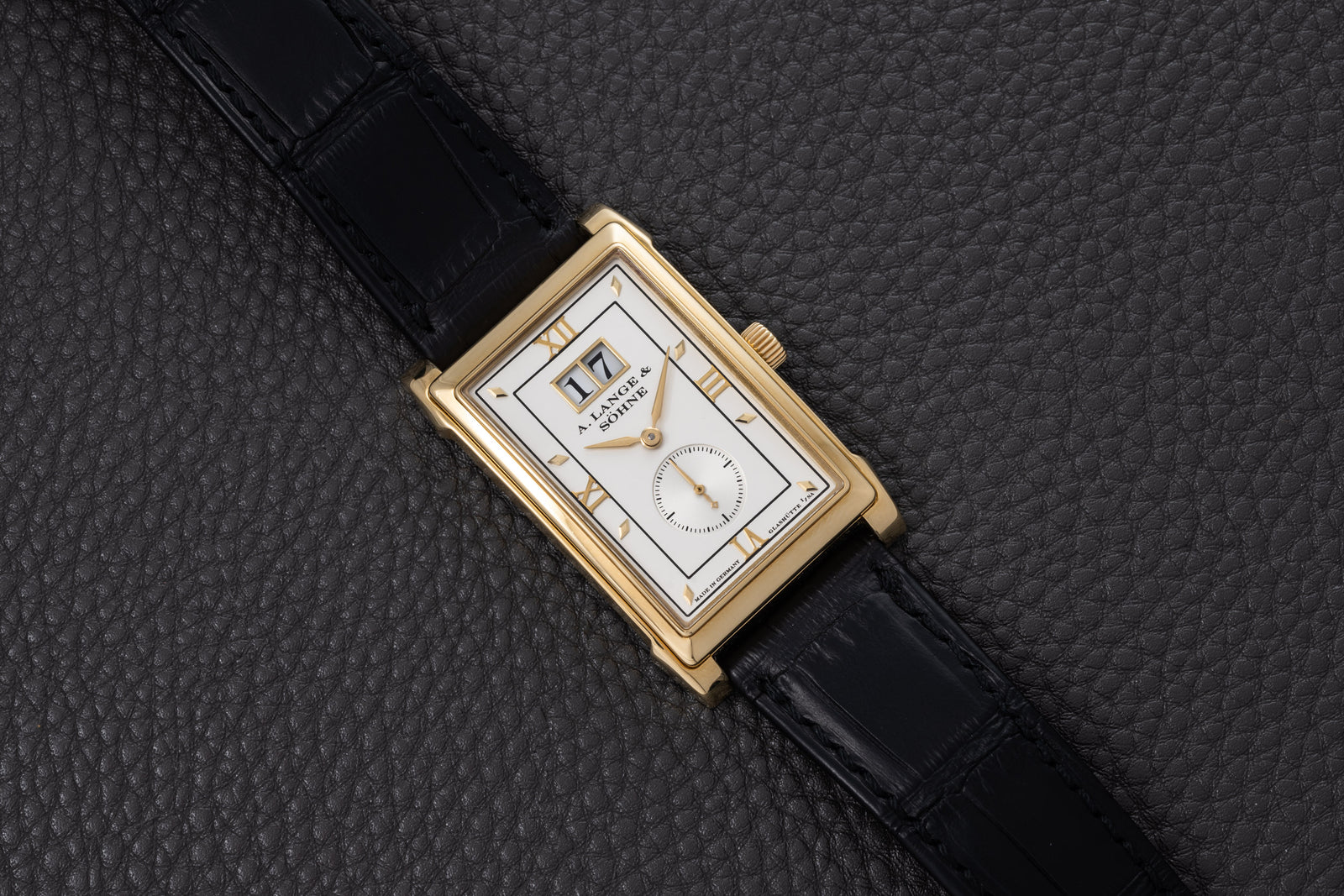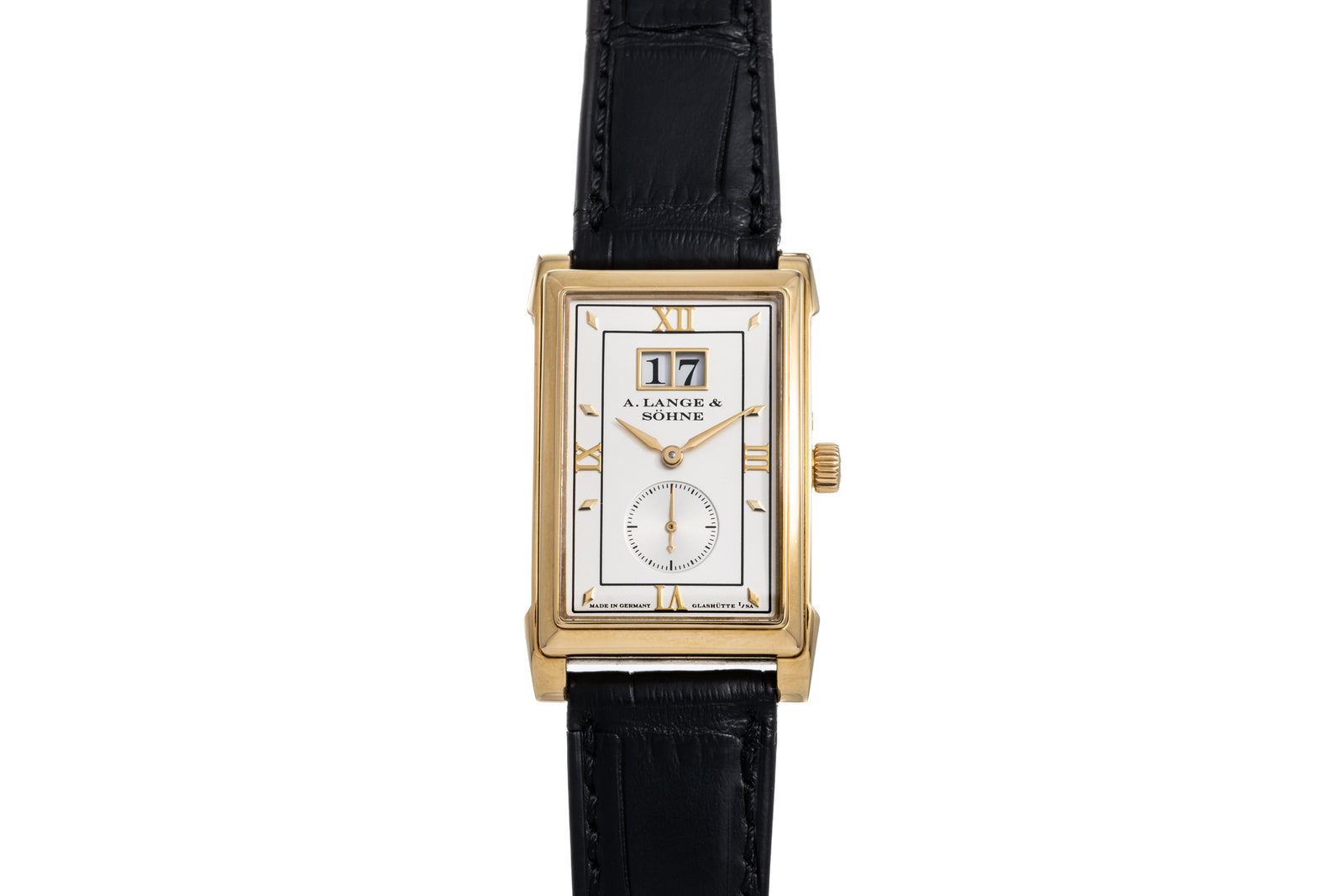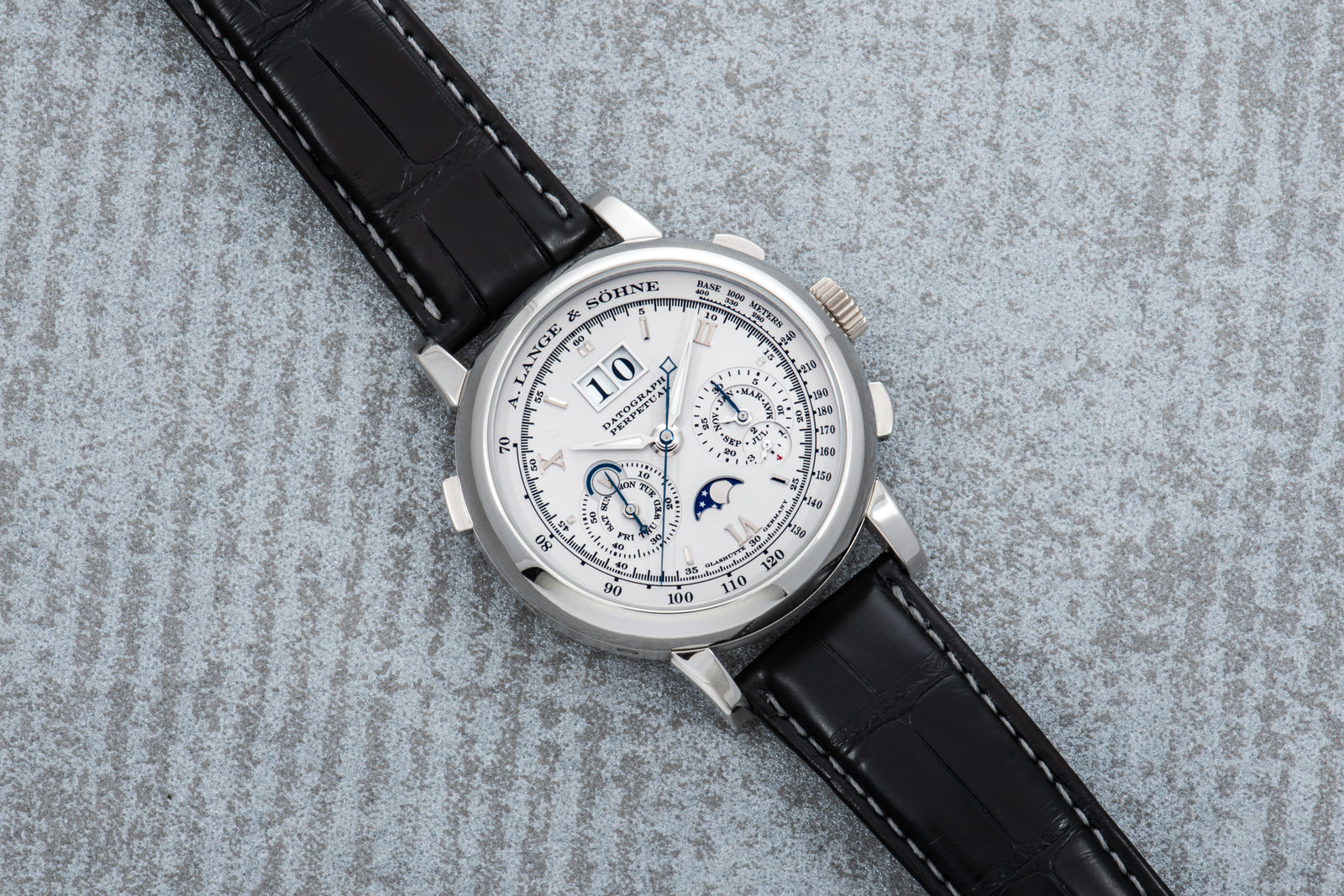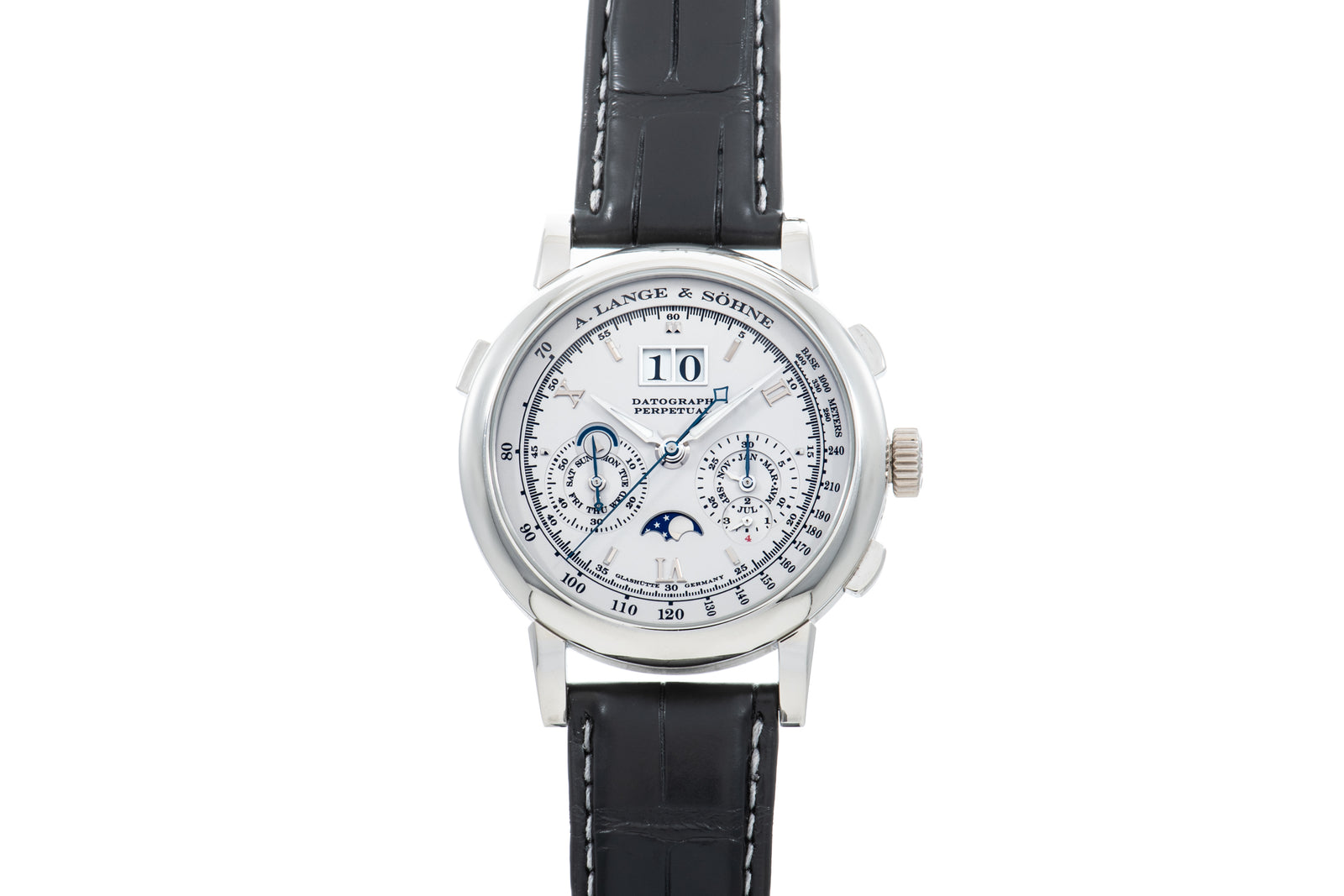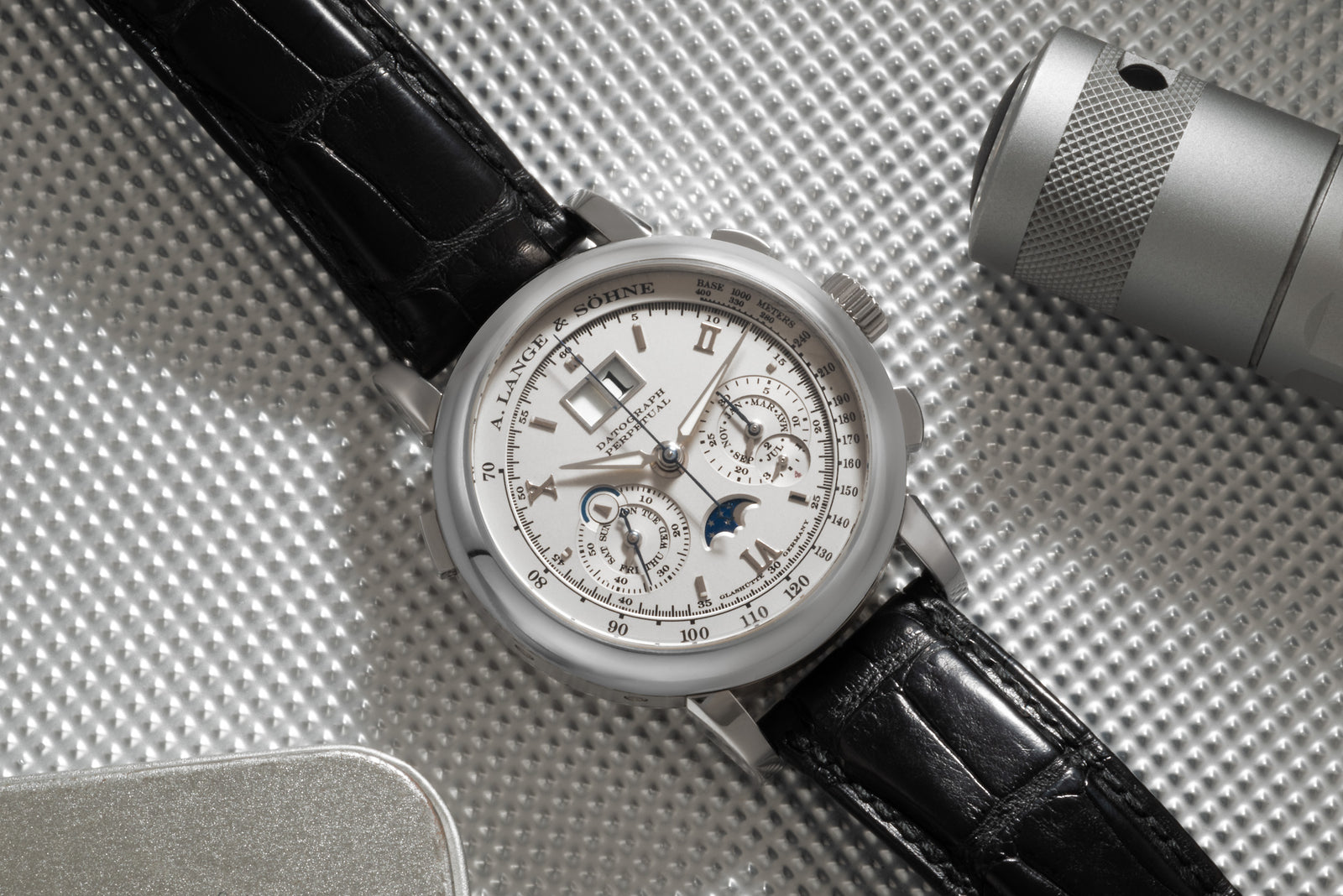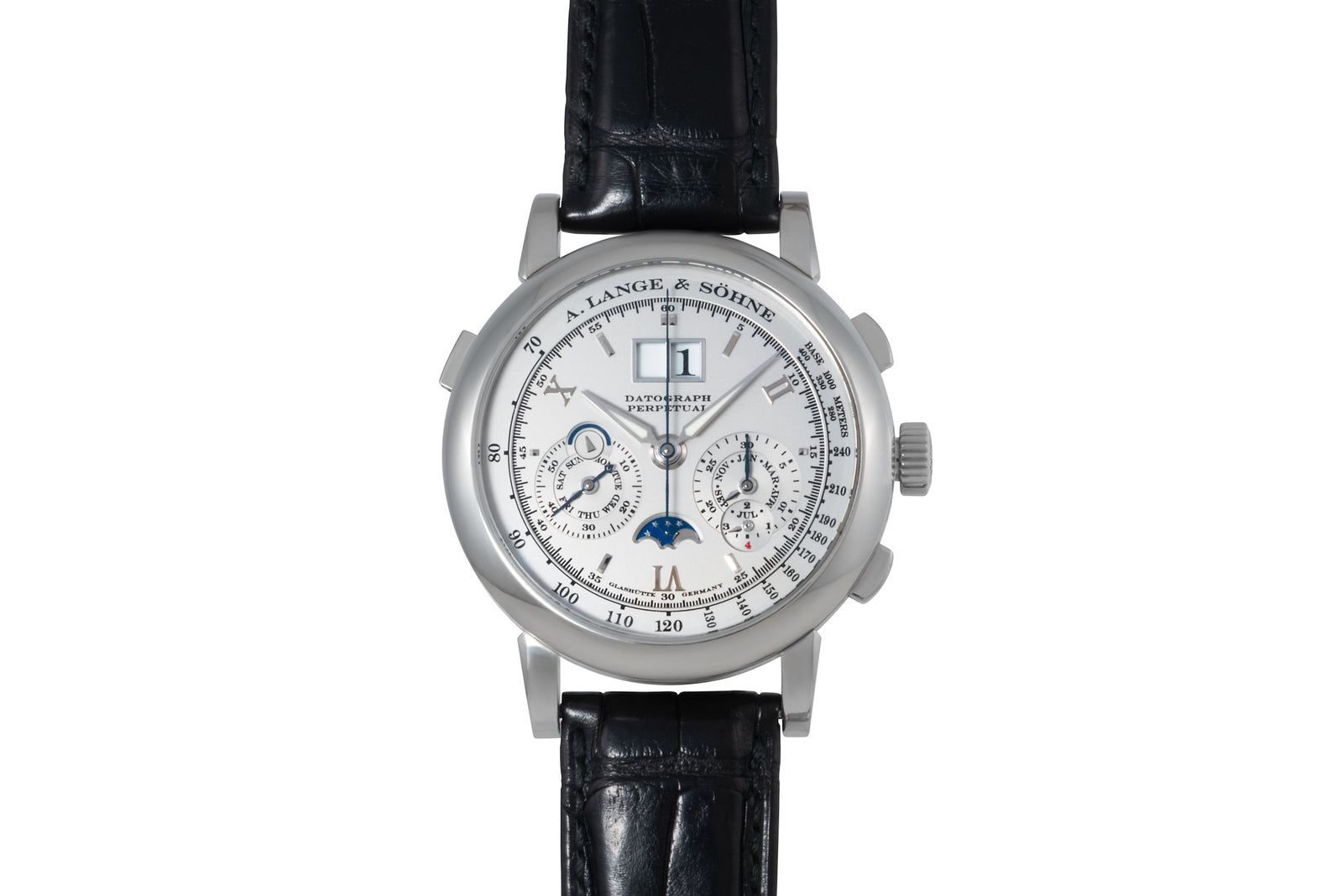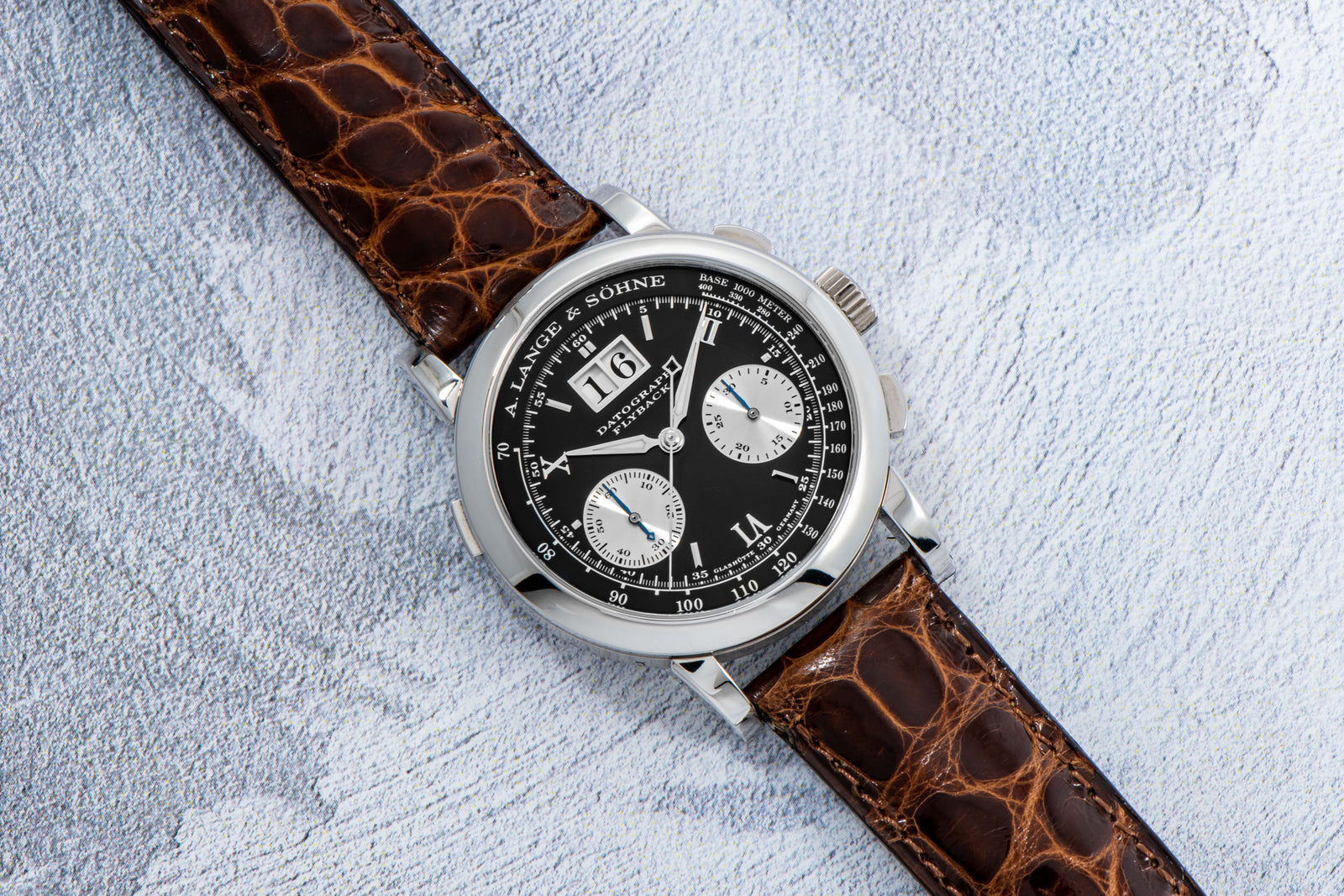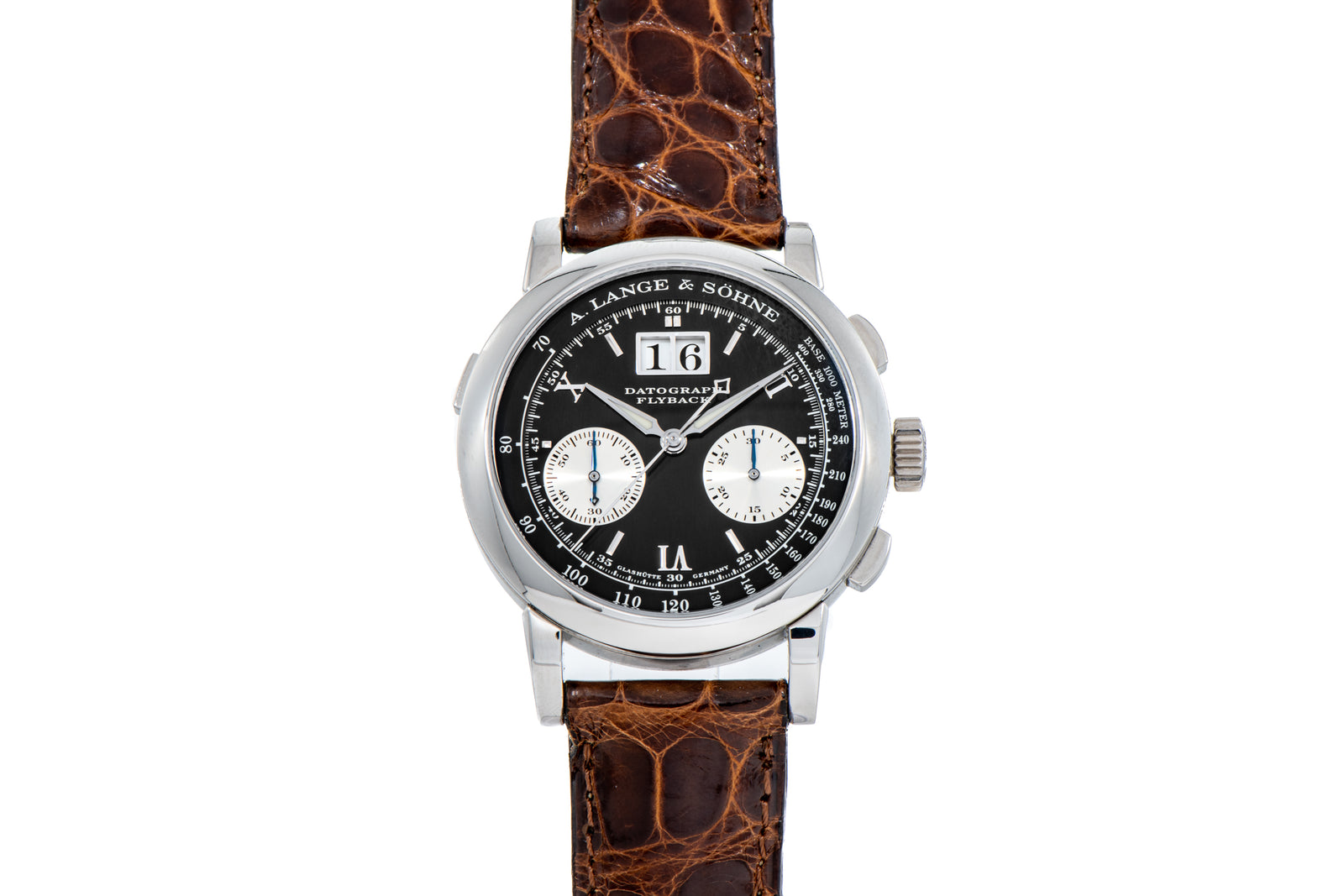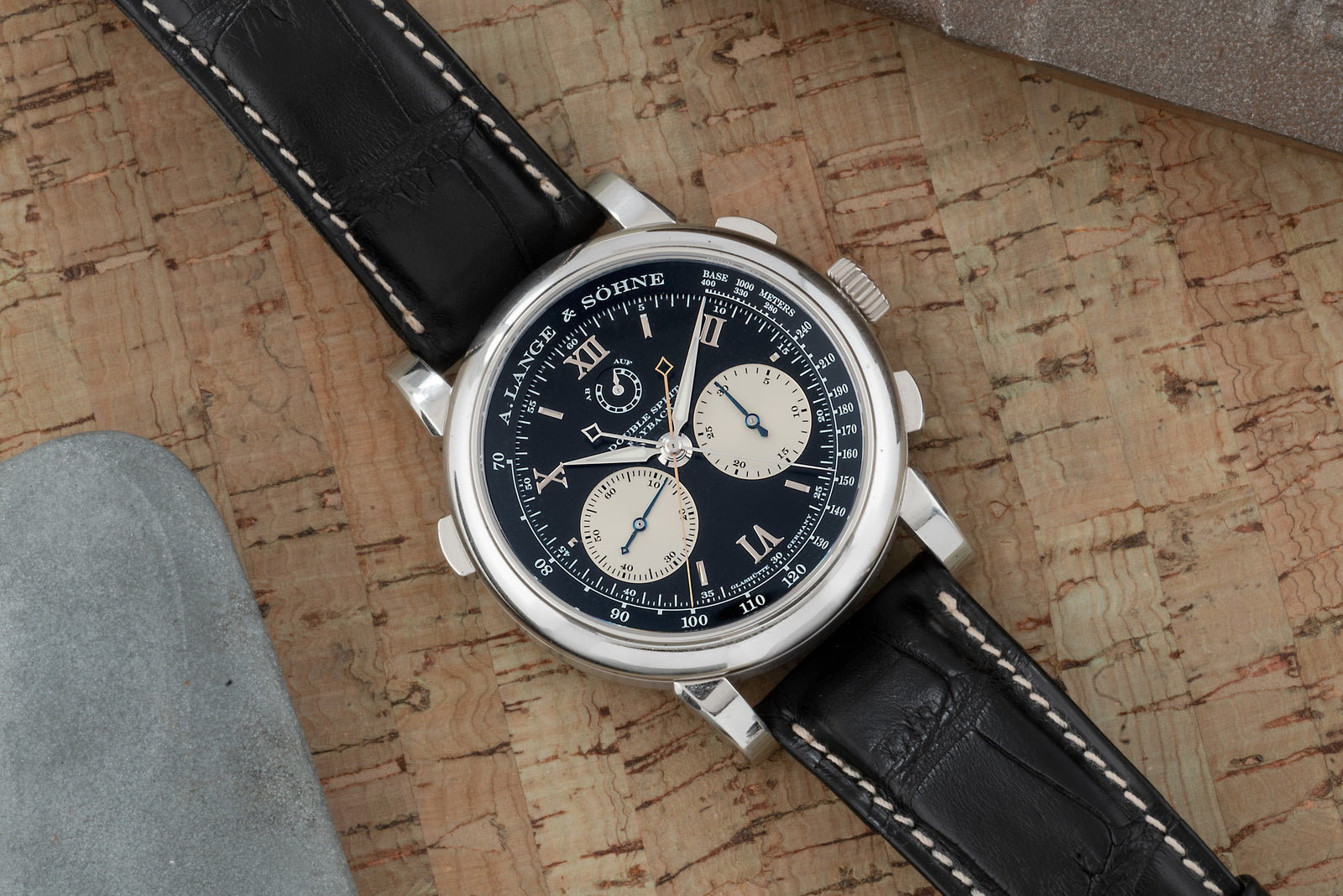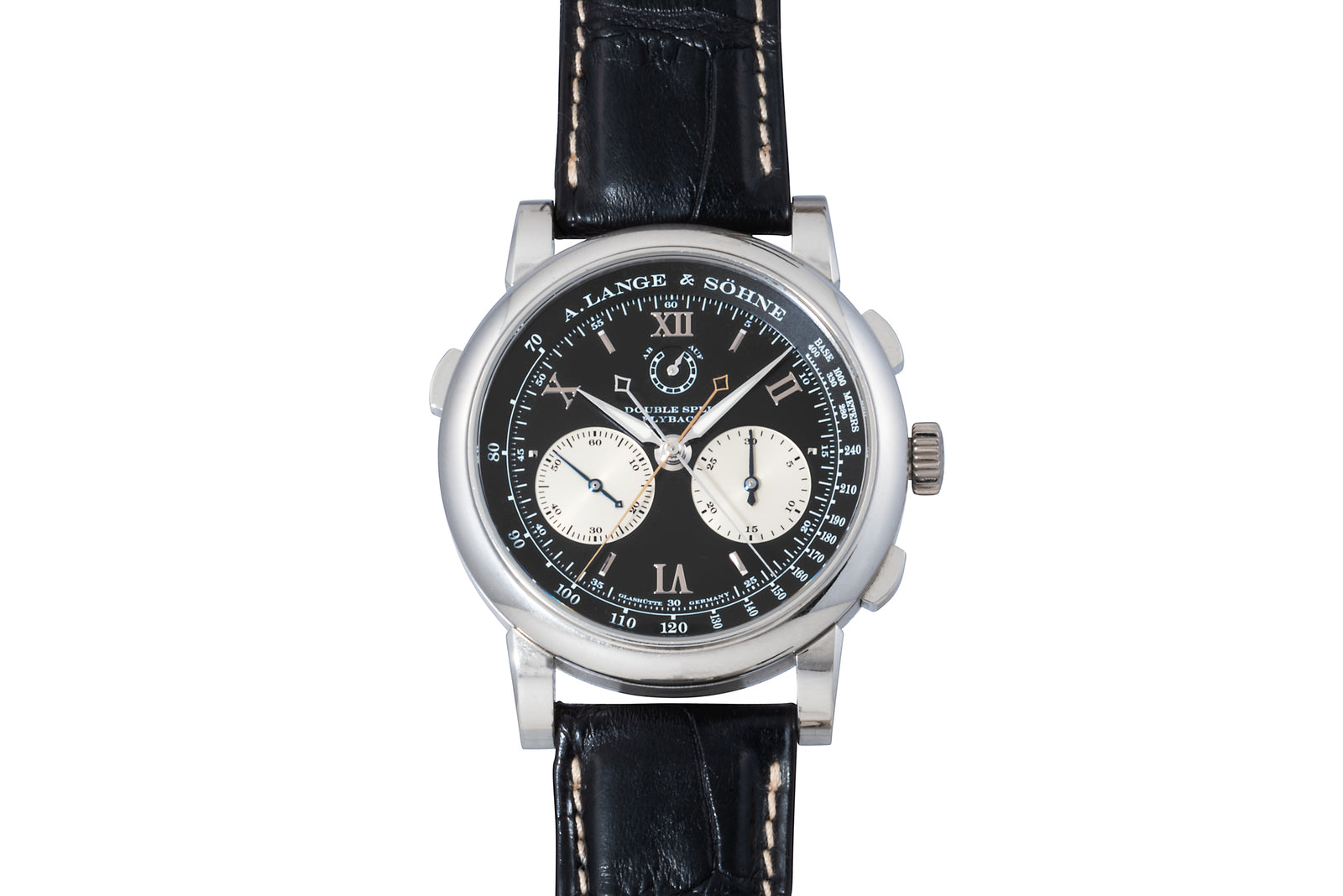Omega Speedmaster Professional
- Soldspan>
- Sold
Why We Love it
–
Why We Love it
–Until July of 1969, the struggle between the United States and the Soviet Union to put a man into space was aptly deserving of the term “Space Race.”
When the United States announced their intention to launch an artificial satellite, so too did the Soviet Union, launching Sputnik I in October of 1957. The United States followed two months later with Project Vanguard, which resulted in a launch failure that the press dubbed “Flopnik.” But the U.S. rallied, launching its first satellite—the Explorer I—in January 1958; later that year, the National Aeronautics and Space Administration, or NASA, would be founded to oversee further launches.
When the Soviet Union put a man in space—cosmonaut Yuri Gagarin, in April 1961—the United States soon followed, sending Alan Shepard into space aboard the Friendship 7 the following month.
With both the Soviet Union and the United States succeeding to put a man in space, there was only one further destination—the Moon.
On May 25, 1961, President Kennedy issued a special message to Congress on the importance of putting a man on the Moon—even more importantly, an American.
“Now it is time to take longer strides…” Kennedy said, “… I believe that this nation should commit itself to achieving the goal, before this decade is out, of landing a man on the Moon and returning him safely to the Earth.”
Now the Space Race metamorphosed into a Moon Race, although the Soviets refused to reveal that they too had aspirations to land a cosmonaut on the lunar surface.
A month after John Glenn’s flight aboard the Mercury-Atlas 6 proved that an American astronaut could successfully complete an orbit of the planet, the Soviet Union proved that they could launch not one but two manned spacecrafts only twenty-four hours apart from each other.
While the United States was launching Project Gemini, the two-man spacecraft that would pave the way for the Apollo program, the Soviet Union developed the Voskhod program. Not only did the Soviet Union succeed in putting not two, but three, cosmonauts in space at the same time, they also attained the distinction of having the first manned spacewalk in March of 1965. Of course, the United States soon followed, with Edward White undertaking the first manned spacewalk for the U.S. in June of that same year.
Though this period of the Space Race would bring triumphs, 1967 also saw tragedy for both sides. On January 27, 1967—as the US and USSR signed the Outer Space Treaty—a fire engulfed the cabin of the spacecraft of Apollo 1, killing all three astronauts on board. Four months later, on April 24, 1967, a series of failures to the Soyuz 1 spacecraft resulted in the death of cosmonaut Vladimir Komarov, who died when the parachute of his spacecraft failed upon re-entry. U.S. listening posts in Turkey allegedly caught Komarov’s anguished last words as he cursed the men who sent him to space in a broken spaceship.
And yet the Race continued, with 1968 bringing both sides ever closer to the ultimate goal.
During the Space Race, the Omega Speedmaster became absolutely essential for astronauts, closely intertwined with both tragedy and triumph. Mercury astronaut Wally Schirra wore one, and after Ed White wore a Speedmaster during his EVA, it was flight-qualified by NASA for all succeeding space missions. White would be wearing his when he died in Apollo I.
Perhaps most importantly of all, Buzz Aldrin would take his (a Reference 145.012) to the Sea of Tranquility, fulfilling the goal that President Kennedy had set forth seven years before.
This Reference 145.012’s serial number puts it in early 1968. It possesses a sharp case, a dial with rich patina, and of course a Pre-Moon style caseback featuring the Omega Hippocampus. On a 1029 stretch flat link bracelet, mercifully still tight even after decades of wear, this Speedmaster is a piece of horological - and American - history.
A:S Guarantee
+
A:S Guarantee
+Our Pledge
Analog:Shift stands behind the authenticity of our products in perpetuity.
Condition
Since our pieces are vintage or pre-owned, please expect wear & patina from usage and age. Please read each item description and examine all product images.
Warranty
We back each Analog:Shift vintage timepiece with a two-year mechanical warranty from the date of purchase.
International Buyers
Please contact us prior to purchase for additional details on shipping and payment options.
Shipping & Returns
+
Shipping & Returns
+All of our watches include complementary insured shipping within the 50 states.
Most of our products are on hand and will ship directly from our headquarters in New York City. In some cases, watches will be shipped directly from one of our authorized partners.
We generally ship our products via FedEx, fully insured, within 5 business days of purchase. An adult signature is required for receipt of all packages for insurance purposes. Expedited shipping is available at an additional cost. We are also happy to hand deliver your purchase in Manhattan or you may pick it up at our showroom.
Returns must be sent overnight or by priority international delivery, fully insured and paid for by the customer. A restocking fee may apply. Watches must be returned in the same condition as initially shipped.
We welcome international buyers, please contact us prior to purchase for additional details on shipping and payment options.
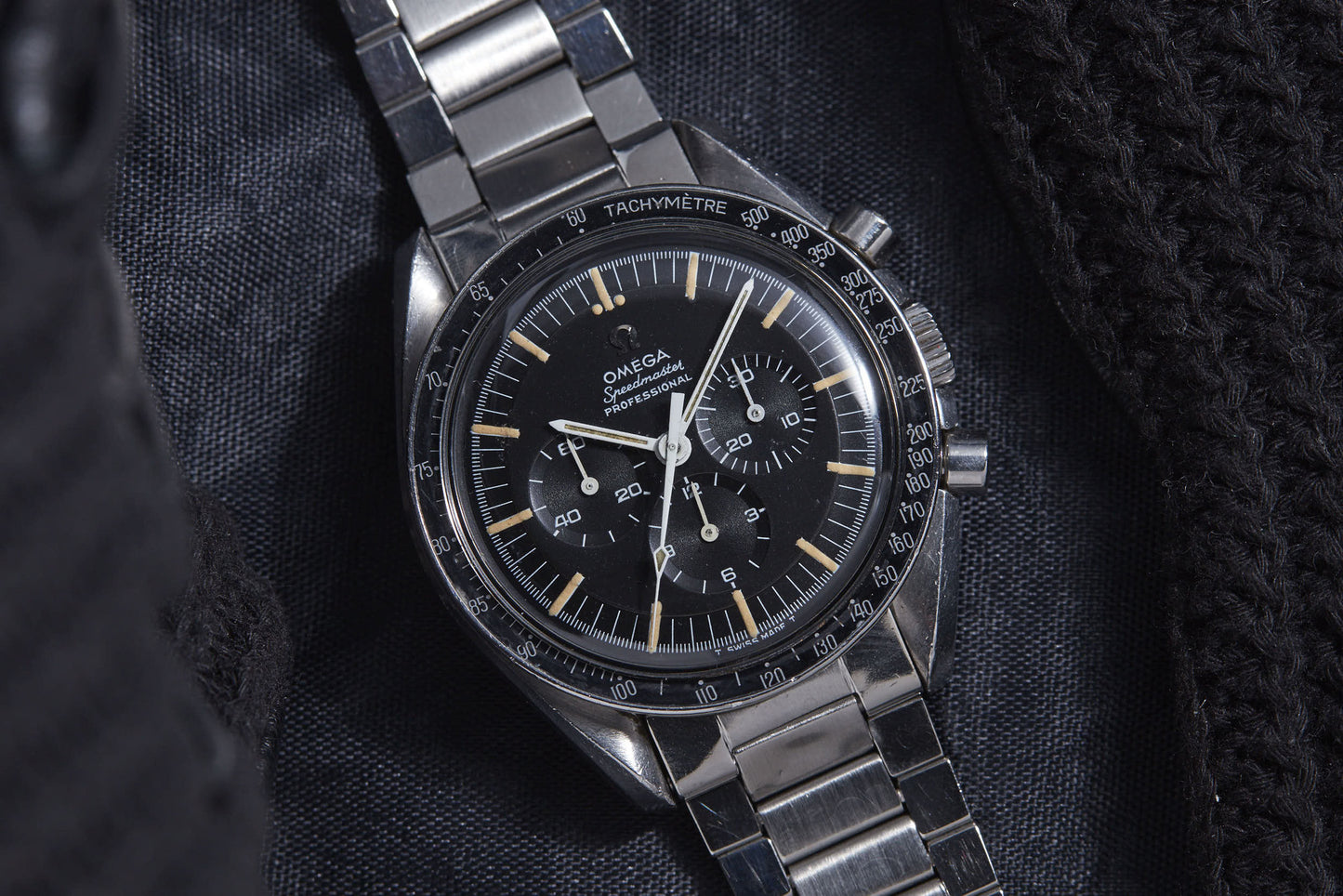
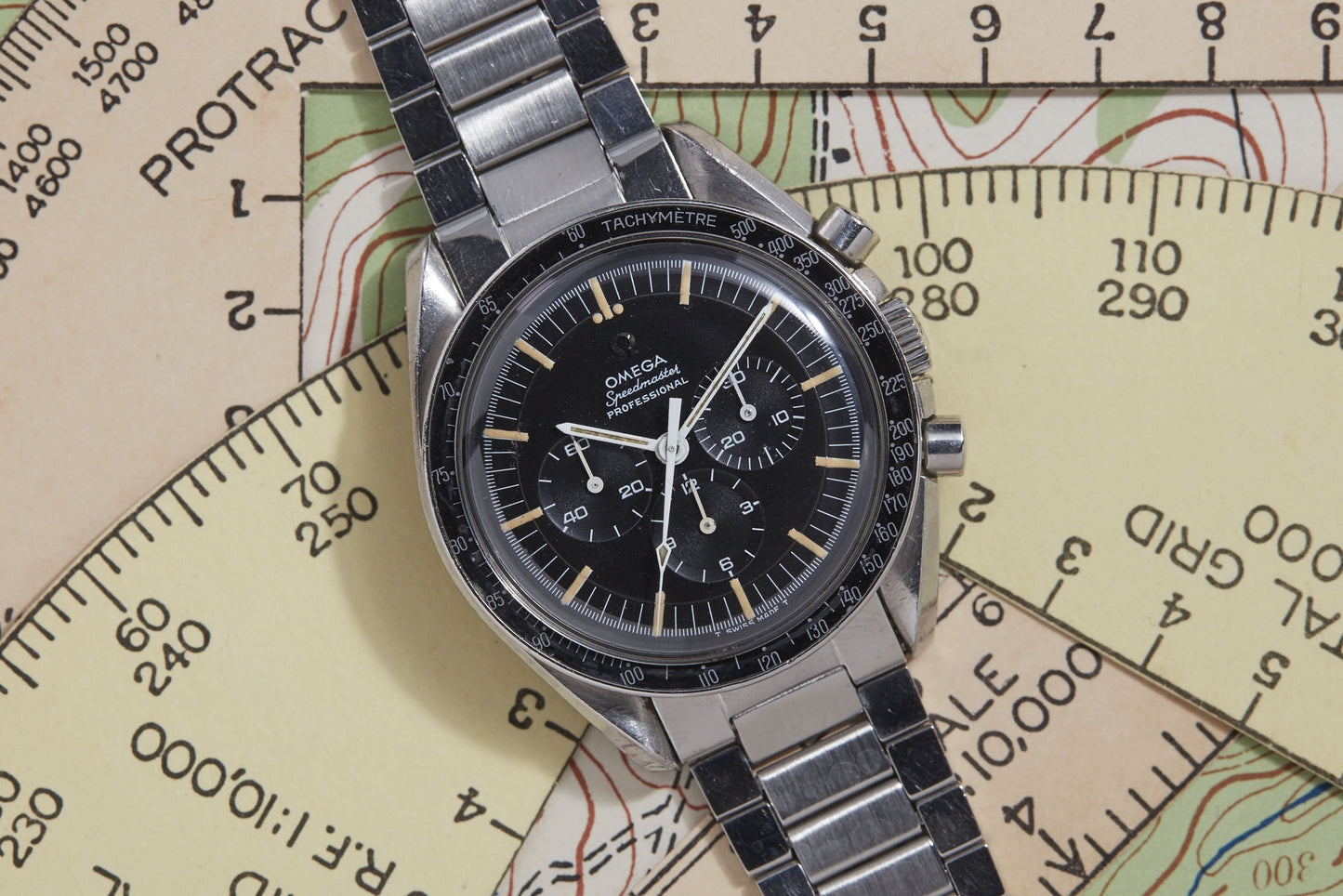
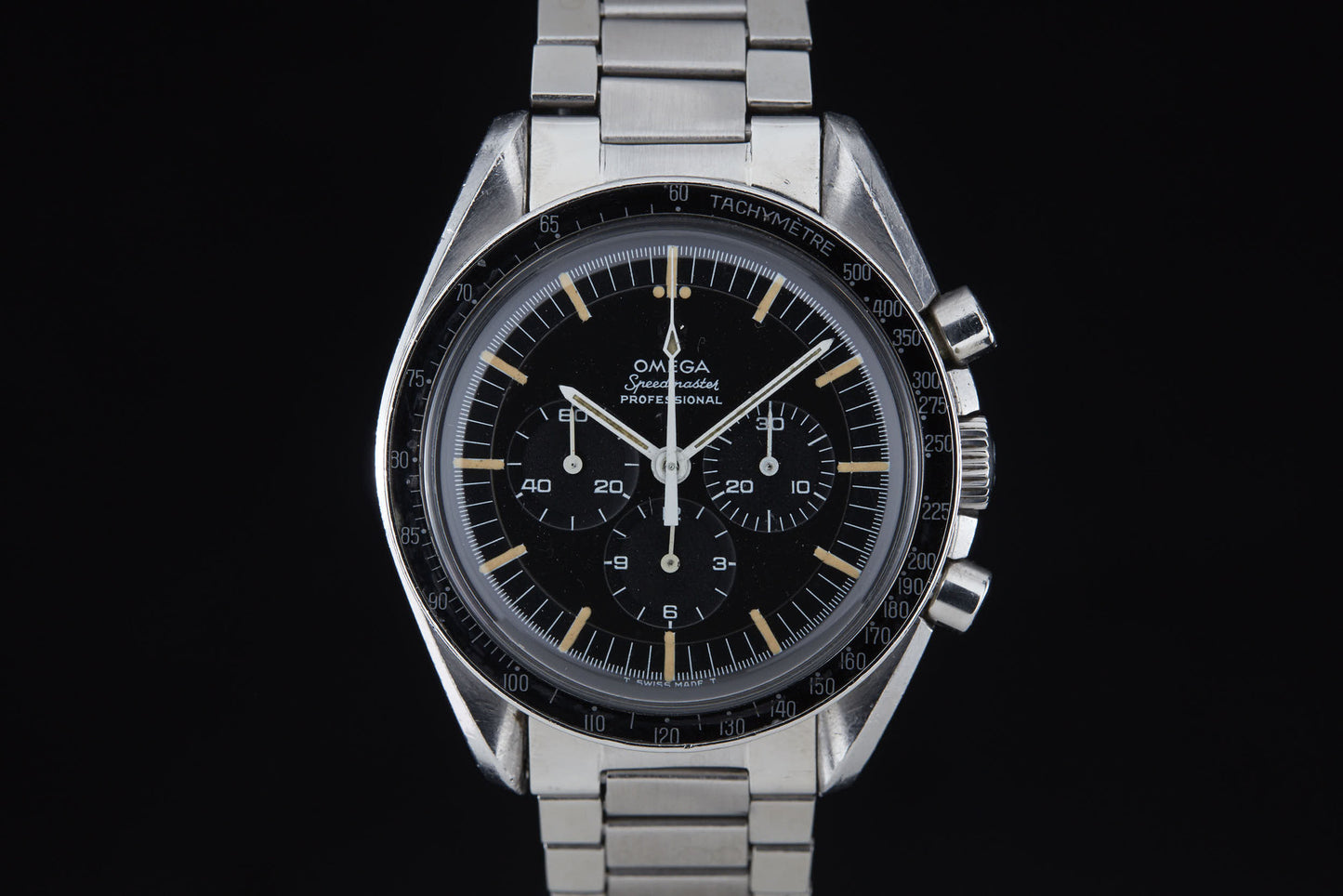
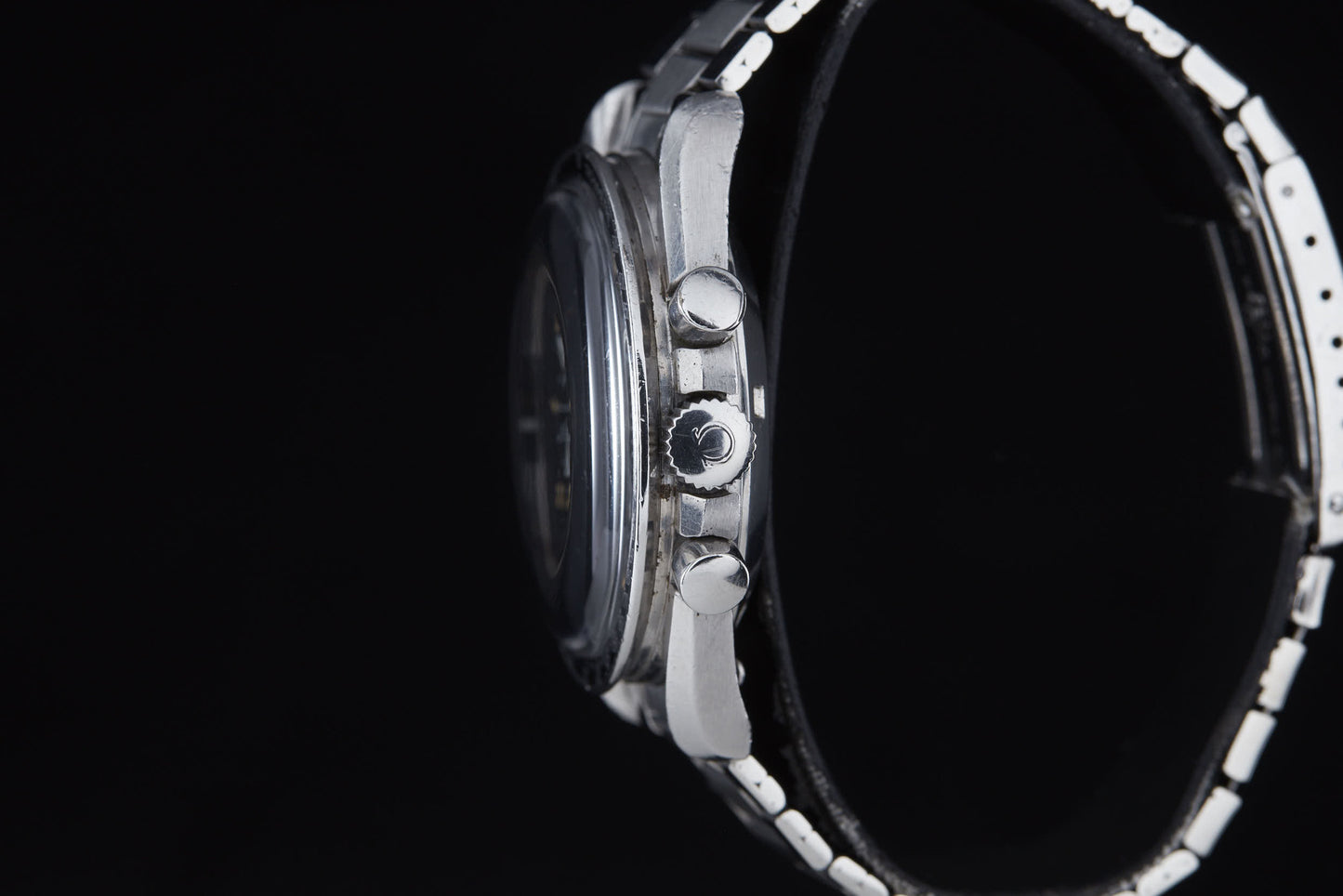
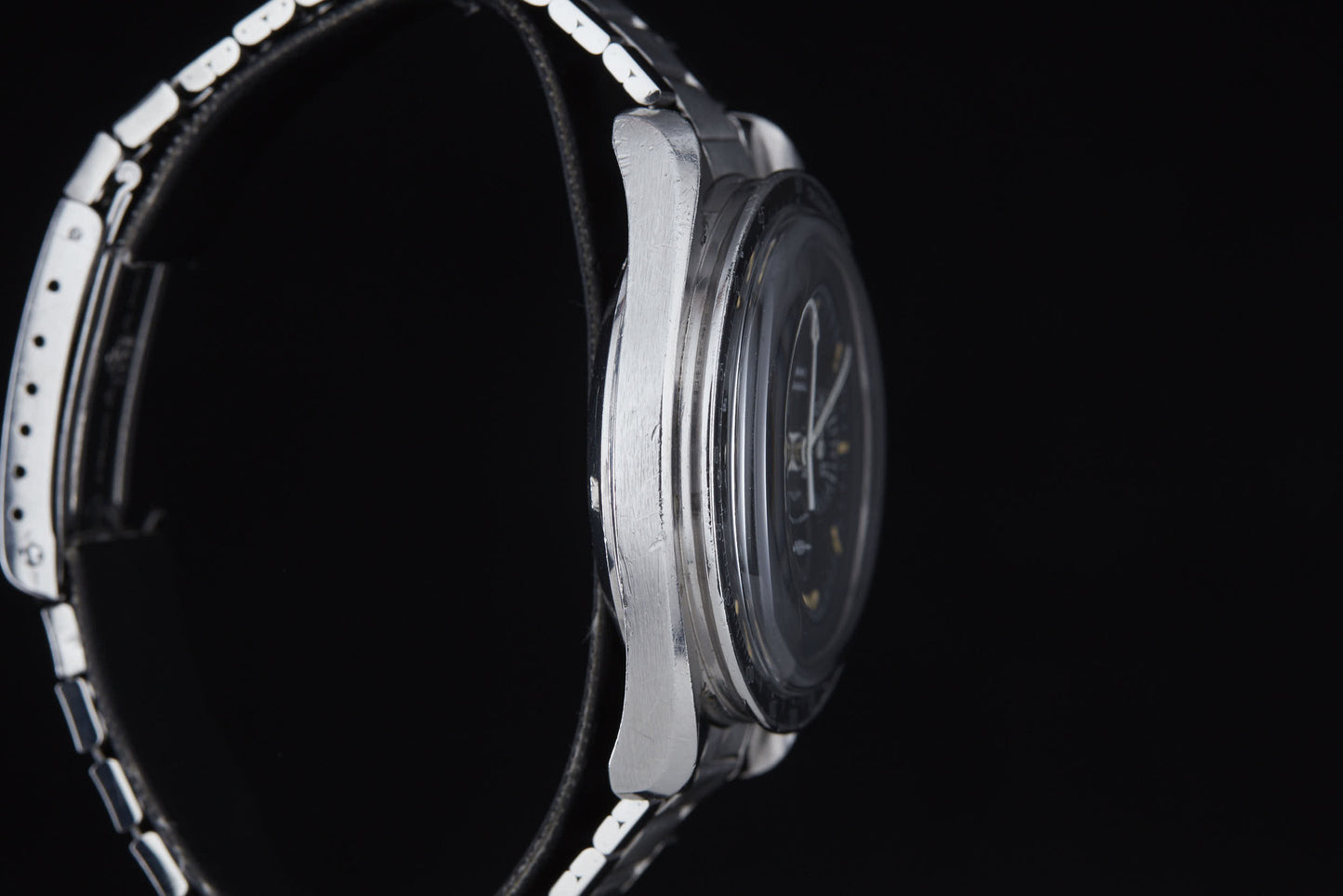

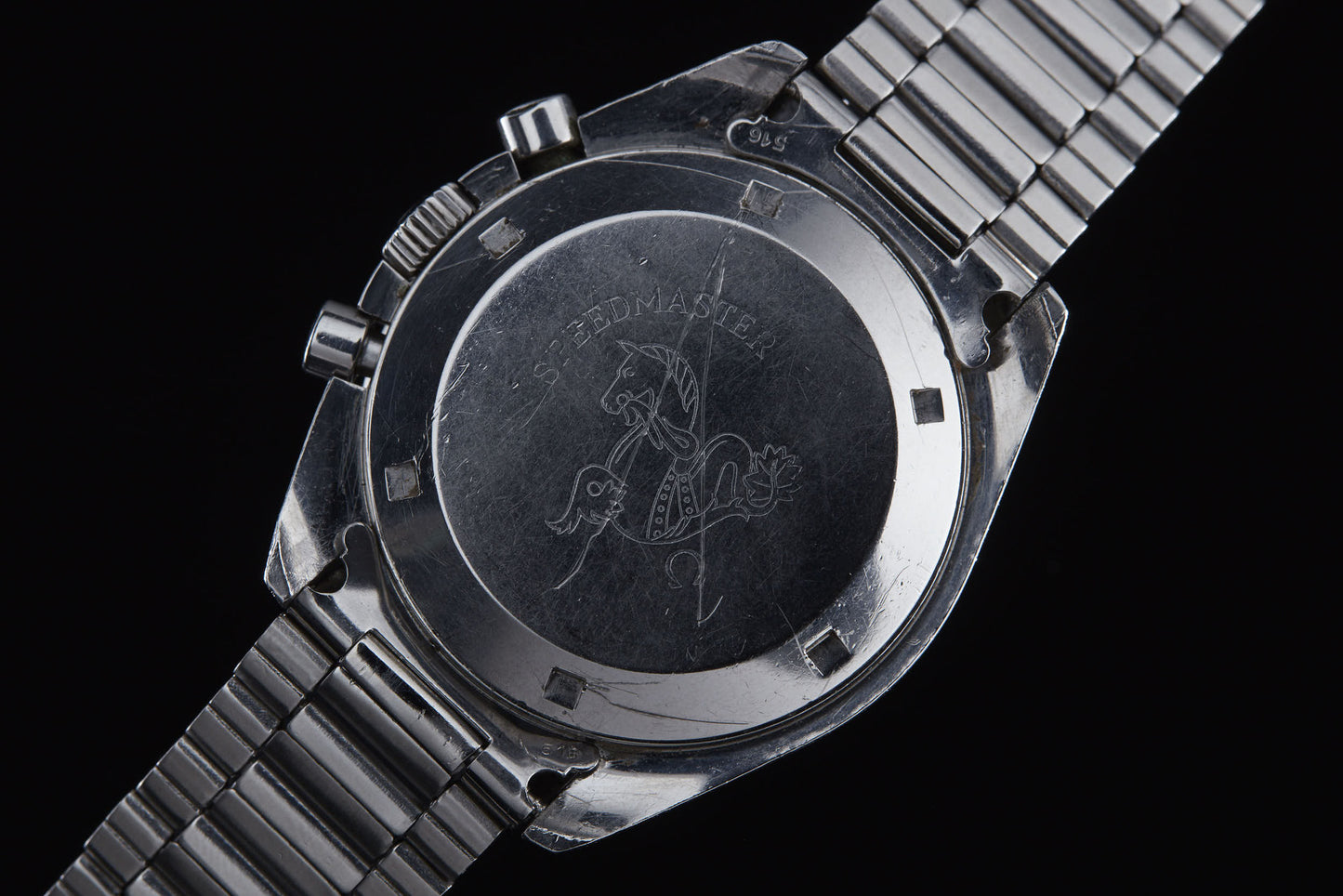
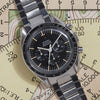
Omega Speedmaster Professional
- Soldspan>
- Sold
